




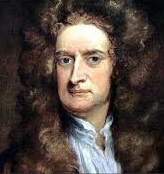





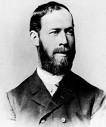
























TLW's Physicistscope™ (Physicist Historyscope) |
By T.L. Winslow (TLW), the Historyscoper™ |
© Copyright by T.L. Winslow. All Rights Reserved. |
Original Pub. Date: July 1, 2016. Last Update: Sept. 28, 2023. |


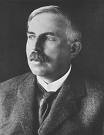












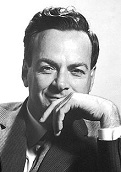
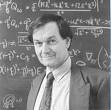

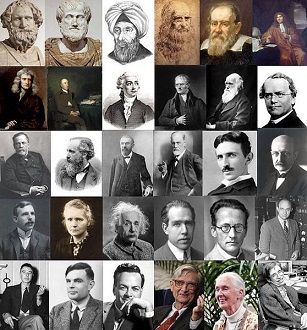
Westerners are not only known as history ignoramuses, but double dumbass history ignoramuses when it comes to physics and physicist history. Since I'm the one-and-only Historyscoper (tm), let me quickly bring you up to speed before you dive into my Master Historyscope.

About 420 B.C.E. Greek philosopher Democritus of Abdera (-460 to -370) pioneers the concept of atomic structure by contrasting the Intellect and the Senses: "Apparently there is color, apparently sweetness, apparently bitterness, actually there are only atoms and the void"; "Poor Intellect, do you hope to defeat us, while from us you borrow your evidence? Your victory is in fact your defeat."

In 335 B.C.E. Stagira, Macedonia-born Greek Golden Mean philosopher (the first scientist?) Aristotle (Gr. "best (purpose) of all") of Stagira (-384 to -322) parts ways with Plato and founds the Lyceum in E Athens, becoming the teacher of undefeated world conqueror Alexander III the Great, preferring to collect data rather than sit around thinking, and (after much personal experimentation?) deciding that all inheritance comes from the father, the mother merely providing the material, and that female babies are caused by "interference" from the mother; he leaves 260 treatises, incl. Constitution of Athens (written in -350) (discovered in 1890 C.E.), Physics, Metaphysics, Ethics, Logic (Prior Analytics), Zoology, De Anima (On the Soul) (the nous poietikos or active intellect vs. the nous pathetikos or passive intellect), which first mentions the Tabula Rasa view of the mind as starting out a blank slate, and Poetics, the first work on art criticism, valuing art based on how it imitates the universal in human nature, and claiming criticism as a science: "Man is by nature a political animal"; "Hope is a waking dream"; "Tyrants preserve themselves by sowing fear and mistrust among the citizens by means of spies, by distracting them with foreign wars, by eliminating men of spirit who might lead a revolution, by humbling the people, and making them incapable of decisive action"; "Music directly represents the passions of the soul. If one listens to the wrong kind of music, he will become the wrong kind of person."
About 1360 French Roman Catholic priest Jean Buridan (1295-1363) develops the Theory of impetus, which he defines as weight x velocity, becoming the precursor to the concepts of inertia, momentum, and acceleration.

In 1364 William of Ockham disciple Nicole Oresme (Nicolas d'Oresme) (1320-82) pub. Le Livre du Ciel et du Monde (The Book of Heaven and Earth), which questions the theory of a stationary Earth, suggesting that it revolves, and proposes Galileo's law of falling bodies; too bad, until Euro militaries become dependent on cannon in the 16th cent. and need scientists to figure out cannonball trajectories, science is only a hobby for univ. profs., who make their livings with theology and dialectic, and mathematics is still too primitive to get very far - the wizards are still mired in alchemy, and the geniuses are too busy reaping commissions from the Church and aristocracy for art works? Oresme leaves Tractatus de Configurationibus Qualitatum et Motuum, which distinguishes between intensity and quantity of heat, anticipates rectangular coordinates and the treatment of time as a variable, and proves the divergence of the harmonic series; also Treatise on the Origin, Nature, Law, and Alterations of Money.


In 1581 with clocklike precision, Italian scientist Galileo Galilei (1564-1642) discovers that the time taken by a swinging lamp in the Cathedral of Pisa does not depend on the angle through which it swings (i.e., a pendulum swings isochronously). In 1591 he drops a 1 lb. and a 100 lb. weight from the Tower of Pisa simultaneously to prove a point in physics about bodies falling at the same speed regardless of mass, refuting the know-it-all Aristotelians. In 1593 he invents the Thermoscope, a primitive uncalibrated thermometer used as a novelty perpetual motion machine.


In 1600 English royal physician William Gilbert (1544-1603) pub. De Magnete, Magneticisque Corporibus, et de Magno Magnete, Tellure, Physiologica Nova, the first great English scientific work, containing his discovery that the Earth itself (not just some island in the N) is a giant magnet, and coining the terms "electricity" (Lat. "electricus" = like amber in its attractive properties), "electric force", "electric attraction", and "magnetic pole".



Two ways to shoot the Moon? In 1608 Dutch eyeglass maker Hans (Johann) Lippershey (1570-1619) applies for a patent for the telescope (Gr. "far-seeing"), which is first used to look at the sky by Galileo, who constructs his own next July 1 mo. after hearing about it. In 1609 the salary of Pisa-born Italian scientist Galileo Galilei (1564-1642) is doubled by the senate of Venice for his invention of the Astronomical Telescope after he views the Moon at 6X magnification in Aug. (later increased to 20X), noting that it has mountains, and discovers Jupiter's moons (not all 63 of them); a believer in astrology, he prepares the horoscope of the Grand Duke of Tuscany and predicts that he will have a long life, only to see him die a few weeks later - a little bit of bacon, a little bit of beans?

In 1611 German astronomer Johannes Kepler (1571-1630) pub. Dioptrice, containing the first explanation of the optics of myopia, and the first theory of the rainbow; also describes the double convex microscope; he also pub. Phyllotaxis, which mentions the Fibonacci Sequence. In 1604 he pub. Supplement to Witelo, Expounding the Optical Part of Astronomy, incl. Ad Vitellionem Paralipomena, the first explanation of the optics of the human eye. In 1618 he pub. Epitome Astronomia Copernicanae (The Epitome of Copernican Astronomy), a textbook on astronomy which describes it in modern terms, replacing scholastic mumbo-jumbo with observation, translation into numbers, and use of mathematical models to form hypotheses which "save the appearances" and describe the true motions of the planets and their causes, which had been hidden in "God's pandects"; those who can penetrate his shrouded Latin prose get a shock; Kepler's salary, which is paid only irregularly before the Thirty Years' War, is hardly paid at all; his mommy is charged with witchcraft during one of the many German witch hunts, and narrowly escapes execution; meanwhile, the Catholics keep persecuting him for not worshipping images and saints, and even his fellow Lutherans in Linz exclude him from their Evening Meal because he doesn't believe in God's omnipresence; "Suffering along with many brothers for the sake of religion and for the glory of Christ by enduring harm and disgrace, by leaving one's house, fields, friends, and home, I would never have believed all of this could be so agreeable." (Kepler)
In 1615 beleaguered Italian scientist Galileo Galilei (1564-1642) writes an Open Letter to Madame Cristina of Lorraine, Grand Duchess of Tuscany on his Copernican views, trying to clear himself of the appearance of being an unbeliever, claiming that the Book of Nature is to be read in the language of mathematical science, while the Scriptures when referring to physical fact are not to be taken literally, "nor does God reveal himself less admirably in the effects of Nature than in the sacred words of Scripture"; the purpose of the Scriptures is to teach us "how to go to heaven, not how the heavens go"; the priestly authorities are not amused, and in Dec. Galileo is summoned before the Inquisition in Rome and put on trial for his scientific views in a super-rigged trial; "To assert that the Earth revolves around the Sun is as erroneous as to claim that Jesus was not born of a virgin" (Cardinal Robert Bellarmine (1542-1621), head of the Congregation of the Holy Office, who personally framed the decision to burn Giordano Bruno in 1600, and is not a student of astronomy); Galileo's observations with the telescope actually backed the Tychonic view that the Earth doesn't move, but he stuck with the Copernican system anyway, and was just lucky?
On Feb. 16, 1616 Galileo writes a letter to Monsignor Dini, trying to clear himself of charges of heresy and blasphemy, but failing to convince the Church of the truth of Copernicanism; on Feb. 24 the Qualifiers of the Holy Office pub. a Report on the Bad Boy Galileo condemning the proposition that "the Sun is the center of the world and entirely devoid of local motion" as "foolish and absurd philosophically, and formally heretical", while the proposition that "the Earth is not the center of the world nor immovable, but moves as a whole, and also with a daily motion" is "to receive the same censure in philosophy and, as regards theological truth, to be at least erroneous in faith"; on Feb. 26 Galileo is ordered by Holy Office Commissioner Gen. Vincenzo Maculano da Firenzuola "to relinquish altogether the said opinion that the Sun is the center of the world and immovable and that the Earth moves, nor further to hold, teach or defend it in any way whatsoever, verbally or in writing"; on Mar. 3 the Congregation of the Index, headed by Cardinal Robert Bellarmine (1542-1621), without mentioning Galileo by name bans all writings which treat Copernicanism as anything but an unproven hypothesis, and prohibits Copernicus' 1543 De Revolutionibus from pub. until it is "corrected" to state that it is only presenting a hypothesis (done in 1620); the anti-Copernican decree, which is never officially ratified by the pope is not annulled until 1757; as chastened Galileo mumbles, "epur si muove" (nevertheless, it moves).

On Nov. 10-11, 1619 (St. Martin's Day) (night) after joining the Dutch States Army in 1618, La Haye en Touraine, France-born philosopher-mathematician (Roman Catholic) (Rosicrucian) ("Father of Modern Philosophy") Rene (René) Descartes (1596-1650) has divine visions in Neuburg an der Donau, Germany in which he "discovered the foundations of a marvelous science", which later becomes Analytic Geometry, along with his famous dictum "Cogito ergo sum" (Je pense donc je suis), causing him to dedicate his life to the mathematical basis of Nature; in 1620 he leaves the army, returning to the Dutch Repub. in 1628, spending 20 years formulating his philosophical works; in 1637 after the horrific Galileo affair, he pub. Discourse on Method (Discourse on the Method of Rightly Conducting One's Reason and Seeking Truth in the Sciences (Discours de la Methode pour bien Conduire sa Raison, et Chercher le Verite dans les Sciences); an epoch-making work expounding the technique of divide and conquer, containing the three appendices (Qui Sont des Essais de Cete Methode): La Dioptrique, advancing the corpuscular theory of light; Les Meteores: Traite de la Lumiere, on cosmology; and La Geometrie, founding the field of analytic geometry and introducing the concepts of a coordinate plane and a mathematical function. In 1644 he pub. Principia Philosophiae (Principles of Philosophy) in Amsterdam, containing the ultimate philosophy soundbyte "Je pense, donc je suis" ("I think, therefore I am"); too bad, it kowtows to the Roman Catholic 1616 anti-Copernican decree by stating that "I want what I have written to be taken simply as an hypothesis, which is perhaps far removed from the truth"; it declares that all motion is relative, thus the Earth can be considered at rest like the Church dictates, drawing criticism from Newton; also that bodies can act on each other only through contact; famous for its diagrams of vortices in which planets are carried in the whirlpool of subtle matter around the Sun - don't try to fight it, don't try and save me, she's a woman in love? In 1662-4 he posth. pub. Treatise on the World, proposing the Dualistic Model of Reality, mind vs. matter.
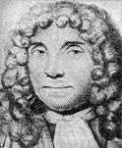
In 1620 Niccolo Cabeo (1586-1650) of Italy discovers that electrified bodies can attract non-electrified ones and that two electrified bodies repel each other.

Speaking of mean Roman Catholics? In Feb. 1632 Pisa-born Italian super-brain scientist ("Father of Science") Galileo Galilei (1564-1642) pub. his "fictional" masterpiece Dialogue Concerning the Two Chief World Systems (Dialogho Sopra i Due Massimi Sistemi del Mondo), which becomes an immediate bestseller in Italy; in Sept. Pope Urban VIII finally gets a copy, shits bricks and orders its distribution stopped, and in Oct. Galileo receives a summons to appear before the friendly Roman Inquisition for reneging on his 1616 promise and only playing games with them, pretending to treat Copernicanism as a theory but anything but; the Medici family waffles but finally drops protection for him, and he has to go to Rome, where the outcome is unstoppable. Speaking of mean Catholics? On Feb. 13, 1633 Galileo arrives in Rome, is interrogated (tortured) by the Big I in Apr., pleads guilty to a lesser charge in exchange for a more lenient sentence (please, I don't want to squat to pee?), is found guilty (3 of 10 Cardinal judges withholding their signatures), and on June 22 in the Dominican Convent of Santa Maria Sopra Minerve he is forced to abjure his belief in the *!?! Copernican hypotheses; after prostrating himself in the white nightshirt of a penitent and kissing their holy feet for saving his soul he is sentenced to an indefinite prison term; in Dec. he is allowed to return to Florence under permanent house arrest at his villa in Arcetri, becoming the end of any remaining claim the Church could make to having any direct pipeline to God; the chilling effect is instant, with French brain man Rene Descartes withholding pub. of Le Monde (The World) (Treatise on the Light) next Apr. because it agrees with the Copernican theory, "and I confess that if it is false, then so are the whole foundations of my philosophy, because it is demonstrated from them beyond doubt" (he turns into the "philosophe au masque"); as late as 1739-42 an ed. of Newton's Principia is pub. with a cover letter by Minim Fathers Le Seur and Jacquier pointing out to good Roman Catholics that the Newtonian system of the world is also "hypothetical". In Jan. 1638 Galileo, now totally blind from retina damage caused by peering at the Sun petitions the Holy Inquisition to be freed, but is denied; he smuggles his Dialogue Concerning Two New Sciences (Statics and Dynamics) to a publisher in Holland (the first popular science bestseller in history); John Milton makes a pilgrimage to Rome to "commune with enlightened men", and visits Galileo - enlightened, get it? In 1641 Galileo proposes the pendulum clock.
In 1638 English astronomer-mathematician William Gascoigne (1612-44) invents the Micrometer.
On Jan. 8, 1642 the #1 scientist of his time, Galileo Galilei (b. 1564) dies, blind and under house arrest by the Infallible Holy Church; what a coincidence that Isaac Newton (d. 1727), the Summa (greatest) scientist of his or any age, and the discoverer of the secret of light is born in England on Dec. 25 Old Style (Jan. 4, 1643 New Style) - the big keelboat is rammed by more and more great logs?

In 1643 Rome-born Italian physicist-mathematician Evangelista Torricelli (1608-47) (Galileo's mathematics student, who succeeded to his chair in mathematics at the U. of Pisa) accidentally invents the Mercury Barometer (Torricelli Tube) (along with Vincenzo Viviani); a torr is later defined as the number of millimeters of mercury in a Torricelli Tube; on June 11, 1644 Torricelli writes the soundbyte in a letter to Michelangelo Ricci: "We live submerged at the bottom of an ocean of air" (Noi viviamo sommersi nel fondo d'un pelago d'aria).

In 1647 French astronomer Adrien Auzout (1622-91) proves that air has barometric pressure.
In 1648 Blaise Pascal proposes the concept of air pressure in barometers, having his brother-in-law carry one up a mountain and record its readings to show that higher altitudes have lower air pressure.

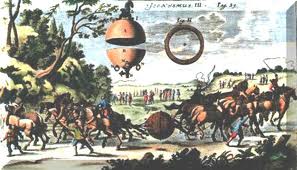
In 1650 German physicist Otto von Guericke (1602-86) of Magdeburg invents the vacuum air pump (now he's got both friction and suction?); in 1655 he uses it to remove the air from two metal Magdenburg hemispheres and challenges horsemen to pull them apart; it ends up being used on farms.

In 1665 English scientist Robert Hooke (1635-1703) pub. Micrographia, popularizing microscopy; "The most ingenious book that I ever read in my life" (Samuel Pepys); uses the microscope to identify cells, coining the term "cell" for the rigid thingies in cork, which remind him of monks' cells; his 12 in. x 18 in. Drawing of a Flea grosses out sensitive ladies and makes them faint?; he is the first person to examine fossils under a microscope, and concludes they are the remains or traces of long-dead organisms; the microscope is now de rigueur, causing Antony van Leeuwenhoek, Marcello Malpighi, Nehemiah Grew, Jan Swammerdam et al. to bend over and squint - giving future air duct salesmen a job? In 1667 he invents the Anemometer for measuring wind speed, which is also invented the same year by Christian Forner (Förner) of Weissenfels, Germany. On Feb. 5, 1675 Sir Isaac Newton writes a Letter to Robert Hooke, with the soundbyte "If I have seen further it is by standing on ye sholders of Giants"; later when their rivalry goes bitter, Newton starts dropping bigger and bigger slams on Hooke, and ultimately tries to erase his memory? In 1678 he pub. Hooke's Law of Elastic Force ("ut tensio, sic vis", "stress is proportional to strain") - especially on springs with hookes?


The year 1666 contains all the Roman numerals MDCLXVI) once; also 1444, 1446, 1464, 1466, 1644, 1646, 1664. In 1666 the Millennium Fever (MF) over the Big Year 1666 stirs mass paranoia in Christendom, the smart money being that all those evil scientists and secular pagans (and the antichrist pope and his papist followers, according to Protestants) are going to be consumed in fire just as the unbelievers were consumed in water in the days of Noah; later, when the disappointment sets in, hope springs eternal in the human breast, so anybody born in this year is suspected of being the Devil or the Antichrist, and Armageddon is at least going to happen in his lifetime, so don't give up the faith?; meanwhile never fear, the Scientists are here, as the Annus Mirabilis of English Cambridge U. man Sir Isaac Newton (1642-1727) begins when the plague causes him to be sent home from Cambridge to his home in Woolsthrope, where the world's most famous apple falls from the tree, revolutionizing Science with the stunning realization that the heavens and the Earth are subject to the same universal laws - one little orb falls from the sky, causing their minds to fall from the divine Heavens into the material world of Earth, and like it? I walk this empty street on the boulevard of broken dreams? Don't let a migraine upset you? As a total rebuff to the Millennium Feverists who say the world is not worth studying (since this is its last year), Isaac Newton goes into a glorious brilliant Rain Man funk in Woolsthorpe and discovers the Integral Calculus (not dental rot but the branch of mathematics) and the Newton's Law of Universal Gravitation (inverse square law), measures the Moon's orbit, and, when not otherwise occupied, buys a glass prism "to try therewith the phenomena of the colours", becoming the first to deduce that the prism splits white light into a spectrum as a result of the different refractive index for each color; sitting under a you know what kind of tree, he observes a you know what falling, and calculates that at a distance of 1 ft. the attraction between two objects is 100 times stronger than at 10 ft., making the super mental leap that the force exerted by the Earth on the apple is the same as that exerted by the Earth on the Moon; "And the same year [1666] I began to think of gravity extending to the orb of the Moon, and having found out how to estimate the force with which a globe revolving within a sphere presses the surface of the sphere, from Kepler's Rule... I deduced that the forces which keep the Planets in their Orbs must [be] reciprocally as the squares of their distances from the centers about which they revolve: and thereby compared the force requisite to keep the Moon in her Orb with the force of gravity at the surface of the earth, and found them answer pretty nearly. All this was in the two plague years of 1665 and 1666, for in those days I was in the prime of my age for invention, and minded Mathematicks and Philosophy more than at any time since" - Isaac Newton, memo in the Portsmouth Collection, 1714; the Newton pippin is later named to commemorate the Big Apple of 1666 - the first modern scientist walks the Earth, and he's white, Anglo-Saxon, and Protestant, but actually not so modern, as he's still got one foot in the past and believes in alchemy and bizarre Bible theories, taking a few years out of his all-important studies to figure out math and physics, in the belief that the Universe is a giant code and he can crack it; his success paradoxically strengthens belief in astrology? Newton's funeral was presided over by "A. (Alexander) Pope".
In May (Aug.?) 1684 celeb Edmund Halley visits Sir Isaac Newton in Cambridge to ask what orbit a body would describe under an inverse-square law of attraction, and Newton replies an ellipse, and that he had proved it years earlier but lost the papers and would rework it and send it to him, which he does in Nov., pub. De Motu Corporum in Gyrum (On the Motion of Revolving Bodies) in Dec., then expanding the work, until in 1687 he pub. his monumental "Principia" at Halley's expense; meanwhile Leibniz pub. his system of the integral and differential calculus independently of Newton, allegedly based on his own work from 1673-6, starting a doowahdiddydiddy credit-seeking race; Newton wins the decision for priority with the great tale of the apple in the plague year of 1666 and his killer theory of gravity, but Leibniz' cooler notation gets adopted by textbook writers.

On July 5, 1687 English #1 superbrain Sir Isaac Newton (1643-1727) pub. Philosophiae Naturalis Principia Mathematica (pr. prin-KIP-ee-ya), founding celestial and terrestrial mechanics with his Three Universal Laws of Motion, proving the inverse square law of gravitation and many other basic results after a bitter feud with Robert Hooke (1635-1703) over priority; the rough ms. is finished on June 20, 1686, but he adds a section on comets with the help of John Flamsteed; the preface acknowledges Edmund Halley, saying "it was through his solicitations that it came to be published"; "But hitherto I have not been able to discover the cause of those properties of gravity from phenomena, and I frame no hypothesis; for whatever is not deduced from the phenomena is to be called an hypothesis; and hypotheses, whether metaphysical or physical, whether of occult qualities or mechanical, have not place in experimental philosophy. In this philosophy particular propositions are inferred from the phenomena, and afterwards rendered general by induction. Thus it was that the impenetrability, the mobility, and the impulsive force of bodies, and the laws of motion and of gravitation, were discovered. And to us it is enough that gravity does really exist, and act according to the laws which we have explained, and abundantly serves to account for all the motions of the celestial bodies and of our sea."
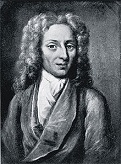
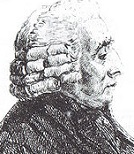
In 1690 Swiss scientist Nicolas Fatio (Facio) (Faccio) de Duillier (1664-1753) presents the unpub. treatise "On the Cause of Gravity" to the Royal Society in London, which proposes the Push/Shadow Theory of Gravitation, that gravity is a pushing force created when two objects shadow each other and block the flow of ether particles, creating an effective vacuum, with the soundbyte that despite its apparent heaviness, it is possible that gold ctains a trillion times more void than substance; in 1748 Swiss (Genevan) physicist Georges-Louis LeSage (1724-1803) revives and popularizes the idea, which is supplanted by Newton's attractive theory of gravitation despite similar results.
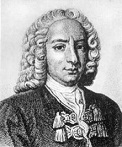
In 1695 French physicist Guillaume Amontons (1663-1705) invents the pendant barometer, and improves the thermometer for use at sea; in 1699 he pub. his rediscovery of the laws of friction first proposed by Leonardo da Vinci, and is pooh-poohed until Charles-Augustin de Coulomb verifies them in 1781.
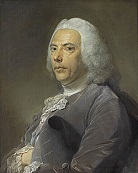
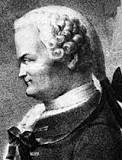
In 1729 French scientist Pierre Bouguer (1698-1758) pub. Essai d'optique sur la gradation de la lumiere (lumičre), a study of the quantity of light lost passing through the atmosphere, announcing the Beer-Lambert Law, which states that the absorbance is directly proportional to its path length; in June 1760 Swiss superbrain scientist Johann Heinrich Lambert (1728-77) pub. Photometria, establishing a complete system of photometry (Gr. "photos" + "metria" = light + measurement), quoting Bouguer's 1729 paper proposing the Beer-Lambert Law and ending up getting credit; in 1852 German Jewish scientist August Beer (1825-63) pub. another version, stating that the intensity of light transmitted through a solution at a given wavelength decreases exponentially with the path length and the concentration of the solute - let's have a beer?
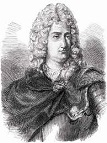
In 1733 French chemist Charles Francois de Cisternay du Fay (1698-1739) pub. his discovery that electrical action can be repulsion as well as attraction, calling the two types "vitreous" and "resinous", noting the difference between conductors ("electrics") and insulators ("non-electrics"); he also disproves the theory of Stephen Gray that electric properties of a body depend on its color.

In 1738 Swiss physicist-mathematician Daniel Bernoulli (1700-82) pub. Hydrodynamica, which lays the basis for the Kinetic Theory of Gases, that they consist of great numbers of molecules moving in all directions, with their impact on a surface causing gas pressure, and heat simply their kinetic energy of motion; he announces Bernoulli's Law (Principle), a pressure-velocity (PV) relationship for fluids explaining the loss of vis viva in fluid flow using the idea of conservation of energy, stating that an increase in the speed of a fluid occurs simultaneously with a decrease in the fluid's pressure or potential energy, founding the field of Hydrodynamics; derives Boyle's Law by considering a gas as a collection of atoms which collide with the container wall, but everybody overlooks it until it's rediscovered in 1859 - they still teach all that in Top Gun school?


And I owe it all to the Bissel Flipit? In 1740 Emilie Du Chatelet (Gabrielle Émilie Le Tonnelier de Breteuil, Marquise Du Châtelet) (1706-49), a student of Pierre de Maupertuis, who attracted Voltaire to her scientific circle then became lovers and shacked up with him in her cozy chalet pub. a seminal paper in Institutes of Physics, based on experiments of Dutch scientist Willem Jacob 's Gravesande (1688-1742), backing up Gottfried Wilham von Leibniz' vis viva theory (energy is mass times speed squared, not mass times speed as Isaac Newton claims); being a woman, it is not accepted for a cent., and meanwhile she dies in 1749 at age 43 (15 years after hooking up with Volty) of an embolism 6 mo. after giving birth to a 4th child; "A great man whose only fault is being a woman." (Voltaire)

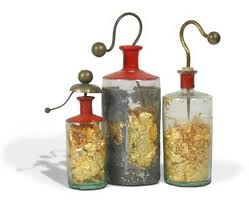
In 1745-6 the Leyden Jar, the biggest electrical breakthrough of the 18th cent. is discovered independently by Canon Ewald Georg von Kleist (1700-48) of Kamin, Pomerania (Oct. 11, 1745) and Pieter van Musschenbroek (1692-1761) of the U. of Leyden in Holland (Jan. 1746), giving it its name.

The original unrated unwrapped American DVD? In 1746 Boston, Mass.-born brain man Benjamin Franklin (1706-90) spends the summer experimenting with electricity. In Apr. 1749 he surmises that lightning is a form of electricity, and warns that it is dangerous to take shelter under a tree during a "thunder gust"; in the summer he kills turkeys with the electricity from a big battery, commenting that "The birds killed in this manner eat uncommonly tender"; in 1749 he pub. Opinions and Conjectures concerning the Properties and Effects of the Electrical Matter, arising from Experiments and Observations, Made at Philadelphia, in which he comments: "The electrical matter consists of particles extremely subtile, since it can permeate common matter, even the densest metals, with such ease and freedom as not to receive any perceptible resistance. If any one should doubt... a shock from an electrified large glass jar, taken through his own body, will probably convince him." In 1750 he writes Two Letters on Lightning that are presented to the Royal Society of London, describing an 1749 experiment (which he hasn't tried yet) to see if lightning is really electricity by holding a 20-30-ft. pointed sharp metal rod up from the top of a tower during a thunderstorm, inventing the Lightning Rod; they are excerpted in The Gentleman's Magazine, then pub. as an 86-page booklet next year, causing a (electric?) sensation. On May 10, 1752 after Louis VI requests that Benjamin Franklin's proposed lightning rod experiments be attempted, naturalists Comte de Buffon and Thomas Francois D'Alibard dragoon a retired soldier to hold a 40-ft. iron rod in a storm and draw sparks in the village of Marly on the N outskirts of Paris; the experiment is then repeated dozens of times across France, making Franklin a celeb; meanwhile, having waited for the steeple of Philly's Christ Church to be finished, 46-y.-o. Franklin performs his famous kite experiments with lightning from a shed in June, using a silk kite flown by his 22-y.-o. son William; news of his fame in France reaches him in July-Aug., and he doesn't report his own experiments until Oct.; the first lightning rods to be put in service are erected in Philadelphia in late June and early July. In 1769 the first lightning rods appear on bldgs. In 1766 Roman Catholic father ? Sterzinger defends Benjamin Franklin's lightning rod from the theory that thunder and lightning are caused by demons, with the soundbyte: "For his lightning-rod did what exorcisms, and holy water, and processions, and the Agnus Dei, and the ringing of church bells, and the rack, and the burning of witches, had failed to do. This was clearly seen, even by the poorest peasants in eastern France, when they observed that the grand spire of Strasburg Cathedral, which neither the sacredness of the place, nor the bells within it, nor the holy water and relics beneath it, could protect from frequent injuries by lightning was once and for all protected by Franklin's rod. Then came into the minds of multitudes the answer to the question which had so long exercised the leading theologians of Europe and America, namely, 'Why should the Almighty strike his own consecrated temples, or suffer Satan to strike them?'"

In 1748 French physicist Abbe Jean-Antoine Nollet (1700-70) invents the Electroscope, and describes how a cylinder filled with alcohol, closed with an animal bladder and immersed in water causes the bladder to swell to bursting as water passes in and alcohol can't pass out, becoming the first description of Osmotic Pressure (Gr. "osmos" = impulse).




In 1782 French papermaker brothers Joseph-Michel Montgolfier (1740-1810) and Jacques-Etienne (Étienne) Montgolfier (1745-99) of Annonay (near Lyons), France test their first small unmanned hot air balloon, made of paper filled with smoke. Do you know the way to Hot Air Bay? On June 4, 1783 the Montgolfier Brothers publicly demonstrate their paper-lined linen hot air balloon, which rises to a height of 3K ft. at Annonay, France in a 10-min. 1-mi. flight; on Aug. 27 Parisian physicist Jacques Alexandre Cesar (César) Charles (1746-1823) launches a 13-ft.-dia. hydrogen-filled silk balloon (constructed under his supervision by A.J. and M.N. Robert) in front of 50K spectators in Paris; it floats at 3K ft. for more than 45 min. and lands in a village 16 mi. away, where the spooked villagers attack it with stones and knives; on Sept. 19 the Montgolfier Brothers conduct another demo in Versailles, witnessed by Louis XVI and Marie Antoinette, where a duck, rooster, and sheep become the first living passengers, traveling 2 mi. in 8 min., with a max. alt. of 1.5K ft, pissing the king off with the dense smoke they deliberately generate in the belief that it's what causes the buoyancy, later learning that it's heat; on Oct. 15 French daredevil physics teacher Jean Francois Pilatre de Rozier (1754-85) makes the first tethered balloon ascension, repeating the demo on Oct. 17 before a group of scientists, then reaching 324 ft. on Oct. 19; on Nov. 21 (2 p.m.) champagne-toting de Rozier and army officer Francois Laurent Marquis d'Arlandes (1742-1809) make the first untethered human flight, reaching a peak alt. of 500 ft. and traveling 5.5 mi. in 25 min. from the Bois de Boulogne in Paris in the presence of Louis XVI and a huge crowd, across the Seine River to the Butte-aux-Cailles; the next day Benjamin Franklin et al. sign the official certification at Passy; on Nov. 31 Jacques Charles (financed by Franklin) flies in his hydrogen balloon, while gouty Franklin watches from his carriage near the Tuileries Gardens; balloon exhibition flights soon become the rage in Paris; when asked what was the practical use of these balloon thingies, Franklin replies "What is the use of a newborn baby?"; the power of a mere individual to go over the king's head and attract large crowds is a giant leap for popular democracy, making the French Rev. inevitable? - it coulda gone better if only they hadn't dabbled with the powder keg of godless atheism? In 1783 Jacques Charles makes and tests the first hydrogen-filled balloon, which is witnessed by Ben Franklin. In 1787 Charles discovers Charles' Law, describing the relationship between gas volume and temperature.
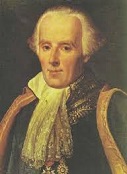
About 1783 English geologist (known for his black complexion) Rev. John Michell (1724-93) proposes the Cavendish Experiment to measure the gravitational constant, and first pub. the Schwarzschild Radius for a star, where gravity causes it become a "dark star" from which light cannot escape, later called a black hole; the experiment is performed in 1797-8 by British scientist Henry Cavendish.
In 1784 London-born English mathematician George Atwood (1745-1807) accurately determines the acceleration of a free-falling body; he also invents a machine to illustrate the effects of Newton's First Law of Motion.

In 1784 French mineralogist Abbe Rene Just Hauy (Haüy) (1743-1822) of the U. of Paris proposes the Law of Rational Indices, that the regular form of crystals is caused by a regular internal arrangement of tiny cubes or polyhedra ("molecules integrantes"); 174 years later (1958) an electron microscope confirms his model.

In 1785 French physicist Charles-Augustin de Coulomb (1736-1806) discovers Coulomb's Law of electrical forces.

In 1798 Am.-born British physicist Sir Benjamin Thompson, Count Rumford (1753-1814) pub. An Enquiry Concerning the Source of Heat which is Excited by Friction, which shows that in the boring of brass cannon there is a direct connection between the heat generated and the mechanical work done, proving that heat is not a material substance; too bad, he calculates a value for the mechanical equivalent of heat that is too high.


In 1799 Italian physicist-chemist Alessandro Giuseppe Antonio Anastasio Volta (1745-1827) makes the shocking discovery of the Voltaic Pile, reporting it to the British Royal Society next year; the first one is made of zinc and copper metal plates and wet cardboard soaked in salt solution, and he later substitutes silver for copper and cloth for cardboard to build bigger piles from which he can draw sparks and shocks, amazing the world and causing a sensation; in May W. Nicholson and A. Carlile use a voltaic pile to decompose water, observing oxygen appearing at one pile and hydrogen at the other, adding to the sensationalism with the idea that atoms are held together by electricity - and hence immortality is just around the corner? In 1818 London-born Mary Wollstonecraft Shelley (1797-1851) pub. the Gothic romance novel Frankenstein, about a mad scientist who makes a corpse live again via electricity; she got the idea while in a trance based on the writings of alchemists about creating a homunculus in a test tube, "a pale student of the unhallowed arts [grave-robbing] kneeling beside the thing he had put together"; "I beheld the wrath of the miserable monster whom I had created"; "I curse (although I curse myself) the hands that formed you" - could it have really been based on her hubby Percy's anatomy?

In 1800 German-born English astronomer Sir Frederick William Herschel (1738-1822) discovers Infrared Light (beyond the red end of the spectrum) using prisms and thermometers on solar rays; he also discovers a connection between 11-year sunspot cycles and wheat prices, becoming the first theory of economic cycles.

In 1801 German chemist Johann Wilhelm Ritter (1776-1810) and English chemist-physicist William Hyde Wollaston (1766-1828) independently discover Ultraviolet Light beyond the violet - now the nightclubs will rock?
In 1802 blind epileptic Kendal, Westmorland, England-born Quaker naturalist John Gough (pr. like gof) (Gow) (1757-1825), who touches plants to his lip and tongue to identify them pub. "An investigation of the method whereby men judge by the ear of the position of sonorous bodies relative to their own persons", describing echolocation; in 1804 he first pub. the elastocaloric effect after quickly stretching a piece of natural rubber (Caoutchouc) and feeling its sudden warmth on his lip, making a fan of James Joule, who undertakes more experiments, discovering that stretched rubber contracts when heated, causing the Gough-Joule Effect to be named; he goes on to discover hydrosere sucession whereby freshwater lakes dry out and become land, and to describe seed banks in soils.

In 1802 English physicist Thomas Young (1773-1829) proposes the Wave Theory of Light in his Royal Society paper On the Theory of Light and Colours. In 1805 he first describes Surface Tension as a hypothetical membrane of infinitesimal thickness stretched over the surface. In 1807 he coins the term "energy", from Gr. "work within".
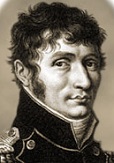
In 1809 French scientist Etienne-Louis Malus (1775-1812) pub. his discovery of the polarization of light by reflection; in 1810 he pub. his theory of double refraction of light in crystals.


In 1819 Danish physicist Hans Christian Oersted (1777-1851) discovers electromagnetism, the relation between electricity and magnetism - no fairy tale? In 1820 he discovers that an electric current in a wire deflects a compass needle, the direction depending on the direction of current flow, thus discovering electromagnetism; French physicist Andre-Marie Ampere (André-Marie Ampčre) (1775-1836) repeats his experiments and discovers that two current-carrying wires exert a reciprocal action upon each other, and pub. Ampere's Law. In 1824 Ampere invents the Galvanometer.
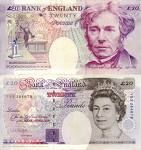
The original A Star is Born? In 1821 English physicist Michael Faraday (1791-1867) turns the "magnetic needle being deflected by an electric current" experiment on its head and discovers the electric motor principle (electromagnetic rotation) ("electrified wire being moved by a magnet"), which unlocks the entire field of electromagnetism in physics, launching the Great Rev. in Physics; his celeb boss Sir Humphry Davy gets jealous and tries to keep him from being elected to the Royal Academy, claiming that he stole the work of William Austin, but when Austin vindicates Faraday, the science is so undeniable he gets in anyway in 1824, and Davy kicks off within five years from self-abuse with laughing gas? In 1831 Faraday discovers Electromagnetic Induction. In 1832 he pub. a pictorial representation of electric and magnetic lines of force, introducing the Field Concept into physics, showing radial instead of straight field lines, rocking the scientific world.

In 1821 Estonian-born German physicist Thomas Johann Seebeck (1770-1831) discovers the Peltier-Seebeck Thermoelectric Effect, where a junction of dissimilar metals produces an electric current when exposed to a temperature gradient, with the voltage produced proportional to the junction temperature difference, and the proportionality constant becoming known as the Seebeck Coefficient. In 1822 he invents the Thermocouple.


No Pain No Gain for electrical circuits? In 1827 German physicist Georg Simon Ohm (1789-1854) pub. his famous Simple Simon Ohm's Law, stating that the ratio of electromagnetic force to current in an electrical circuit is a variable, er, constant, i.e. V = I * R (variable electromotive force = variable electric current times constant electrical resistance, independent of current and voltage).

In 1831 English physicist Joseph Henry (1797-1878) invents the electric bell; he uses silk from his wife's stockings to wrap wire for the poles of his horseshoe magnet, which is able to lift one-third ton. In 1832 he discovers self-induced currents (inductance), and in 1842 he discovers the oscillatory character of electrical discharges.

In 1840 Cambridge historian-philosopher William Whewell (1794-1866) coins the word "scientist" (Lat. "scire" = to know, Lat. "scindire" = to cut, Gr. "schizein" = to split) ("We need very much a name to describe a cultivator of science in general. I should incline to call him a scientist"); he also coins the term "physicist".


In 1842 Austrian physicist Christian Andreas Doppler (1803-53) pub. the first explanation of the Doppler Effect (Shift). In 1845 Dutch scientist Christoph Hendrik Diederik (Christophorus Henricus Diedericus) Buys Ballot (1817-90) first tests the brand-new Doppler Effect by having an orchestra of trumpeters perform in an open railroad car as it speeds through the countryside on the Utrecht-Amsterdam line.


In 1843 French mathematician Adhemar Jean Claude Barre (Adhémar Jean Claude Barré) de Saint-Venant (1797-1886) pub. the first correct derivation of the Navier-Stokes Equations for viscous flow, and becomes the first to identify the coefficient of viscosity as the multiplying factor for velocity gradients in the flow; too bad, English physicist Sir George Gabriel Stokes (1809-1903) ends up getting credit after he asks his Cambridge students to solve it for prize exams in 1854, even though he got the solution in 1850 from Lord Kelvin.
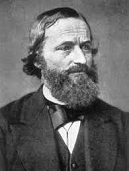
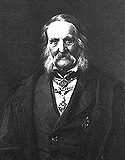
In 1845 German physicist Gustav Robert Kirchhoff (1824-87) proposes Kirchhoff's Circuit Laws, generalizing the work of Georg Simon Ohm and preparing the way for the work of James Clerk Maxwell; meanwhile his teacher, German physicist Franz Ernst Neumann (1798-1895) pub. a mathematical justification of the law of electromagnetic induction.

The original Rudolf the Red-Nosed Rain On Your Parade, Dear? In 1850 German physicist Rudolf Julius Emanuel Clausius (1822-88) formulates the Second Law of Thermodynamics, and the Kinetic Theory of Gases. In 1865 he coins the term "entropy", and reformulates the Second Law of Thermodynamics using it: "The entropy of the Universe is constantly increasing to an eventual maximum" - that sounds good and bad at the same time?

In 1850 French physicist Jean Bernard Leon Foucault (1819-68) proves that light travels more slowly in water than in air, and that the speed varies inversely with the index of refraction. In 1851 he wows the crowds with his 220-ft. (67m) wire pendulum suspended from the dome of the Pantheon in Paris, proving that the Earth really rotates on its axis.

The lukewarm Love Train, or, There are only two kinds of people, those who think that there is a God, and those who believe they are God? Right in your face mask? In 1851 English physicist William Thomson (1824-1907) (later Lord Kelvin) begins pub. papers on the laws of conservation and dissipation of energy, generalizing Carnot's 1824 paper and formulating the Second Law of Thermodynamics, the idea of degradation of energy and the eventual heat death of the Universe, in which there is a uniform temperature throughout, hence none of its energy can be converted into useful work; "Though the total energy of the Universe is constant, the amount of free energy decreases steadily"; luckily there is enough free energy still left for trillions of years?
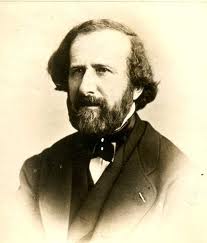
In 1853 French physicist Armand Hippolyte Louis Fizeau (1819-96) first describes the use of the capacitor (condenser) to increase the efficiency of an induction coil.


In 1860 Ludwig Boltzmann (1844-1906) of Austria and James Clerk Maxwell (1831-79) of Scotland begin the development of Statistical Mechanics, treating gas as a collection of huge numbers of billiard balls obeying Newton's Laws of Motion. In 1861 Maxwell pub. the paper On Physical Lines of Force in Philosophical Mag., first describing Maxwell's Equations, four partial differential equations which contain a combined theory unifying all partial theories of electricity and magnetism, showing that a magnetic field generates an electric field and vice-versa, forming a pulse which propagates at the speed of light, and that therefore light is an electromagnetic wave, and furthermore that light can only travel at the speed c, and furthermore that the speed of the source of the light doesn't affect it, becoming one of the greatest leaps of thought in history; they are first pub. as a distinct group in 1884 by Oliver Heaviside and Willard Gibbs - the potato salad of physics?

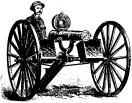
In 1861-5 the horrific U.S. Civil War sees the invention of the first modern weapon when N.C.-born agricultural equipment maker Richard Jordan Gatling (1818-1903) patents the 10-barrel hand-cranked hundreds-of-rounds-per-min. Gatling Gun (the first practical machine gun) just in time for use on some Johnny Rebs; it is first used by the Union Army in 1864, but luckily never sees extensive use.
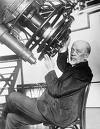

In 1872 Am. astronomer Asaph Hall (1829-2907) pub. an article on the experimental determination of pi by throwing a fine steel wire randomly onto a plane surface ruled with equidistant parallel lines, with pi being equal to 2 * (l/d) * (n/i), where l = length of wire, d = distance between lines, n = # of trials, and i = # of intersections. On Aug. 12, 1877 while not throwing steel wires onto a wooden plane, Am. astronomer Asaph Hall (1829-2907) discovers Mars' moons Deimos (Mars II) (smaller and farther, rises in the E and sets in the W), followed on Aug. 17 Phobos (Mars I) (larger and closer, rises in the W and sets in the E) (closest moon to its primary in the Solar System), with English chemist Henry George Madan (1838-1901) suggesting the names after Book 15, Line 119 of Homer's Iliad, where Ares (Mars) summons Dread (Deimos) and Fear (Phobos); Madan's grand-niece Venetia Phair (nee Burney) later names Pluto in 1930; meanwhile Italian astronomer Giovanni Virginio Schiaparelli (1835-1910) first observes the canals (canali) of Mars, sparking the public's imagination. In 1889 Schiaparelli discovers the synchronous rotations of planets Mercury and Venus.

In 1873 Dutch physicist Johannes van der Waals (1837-1923) pub. the Van der Waals Equation of State for imperfect gases.

In 1874 German physicist Friedrich Wilhelm Georg Kohlrausch (1840-1910) demonstrates that an electrolyte has a definite constant value of electrical resistance, and goes on to to verify the independent migration of ions.

In 1874 Irish physicist George Johnstone Stoney (1826-1911) of the Nat. U of Ireland coins the word "electron"; actually he named it "electrine", and changed it in 1891 - don't ask why a Gaelic wants to use Greek?

In 1876 after becoming the first to estimate the Avogadro Constant in 1865, Austrian physicist-chemist Johann Josef Loschmidt (1821-95) pub. the results of experiments with columns of air, finding that gravity causes it to form a stable non-zero vertical temperature gradient of maximum entropy, which applies to every planet's troposphere, which is disputed by his colleagues Ludwig Boltzmann and James Clerk Maxwell, who get all the publicity?


On Dec. 22, 1877 French physicist Louis-Paul Cailletet (1832-1913) and Swiss physicist Raoul Pictet (1846-1929) simultaneously send telegrams to the Academy of Science in Paris announcing their invention of machines for liquefying oxygen; Picet goes on to liquefy nitrogen and demonstrate that radiation from a cold object cannot heat a warmer object - picture their yipee-yo-cay-yay?
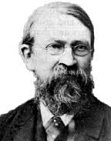
In 1877 Austrian (Moravian) physicist Ernst Waldfried Josef Wenzel Mach (1838-1916) pub. a paper announcing Mach Numbers, the ratio of flow velocity past a boundary to the local speed of sound.

In 1878 English chemist-physicist Sir William Crookes (1832-1919) invents the Cathode Ray (Crookes) Tube (CRT), which requires a vacuum of one twenty-thousandth of atmospheric pressure (0.03 mm Hg), and shows that the rays travel in straight lines that can be deflected by a magnet, then uses the beam to heat metals, turn a small wheel, and excite fluorescence - Star Trek coming right up?
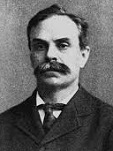
In 1879 Gorham, Maine-born physicist Edwin Herbert Hall (1855-1938) discovers the Hall Effect, the creation of a voltage difference across an electrical conductor transverse to the electric current, along with a magnetic field perpendicular to the current.
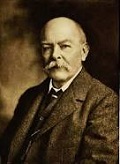
In 1884 Manchester-born English physicist John Henry Poynting (1852-1914) pub. Poynting's Theorem for the conservation of energy in an electric field, introducing the concept of the Poynting Vector. In 1903 he pub. the Poynting-Robertson effect, whereby the Sun's radiation can draw small particles towards it. On Dec. 1, 1807 he pub. an article in Philosophical Mag. containing the first use of the term "greenhouse effect" to describe the "blanketing effect" ot he atmosphere.


In spring-summer 1887 after Polish-Am. physicist Albert Abraham Michelson (1852-1931) makes an experimental determination of the Earth's speed through the ether in Potsdam in 1881, and the results (zero) are so unexpected that he repeats the experiments in Cleveland, Ohio in partnership with Edward Williams Morley (1838-1923), the results of the Michelson-Morley Experiment throw the physics world on its head with its apparent proof of the non-existence of Leibniz's stationary ether (aether) (or the disturbing conclusion that the Earth carries the ether along with it); the world must wait for Einstein to figure out that instead of time and space being invariant and the speed of light variable, it's the other way around, and both space and time are variable (relative to inertial speed).

In Nov. 1887 German physicist Heinrich Rudolf Hertz (1857-94) pub. the paper "On Electromagnetic Effects Produced by Electrical Disturbances in Insulators, showing that James Clerk Maxwell's 1865 paper theorizing the existence of electromagnetic waves is correct, causing the unit of frequency cycles per sec. to be named in his honor; he observes that a spark jumps a gap more easily when the electrodes are illuminated by light from another spark gap, becoming the first observation of the photoelectric effect, which Einstein finally explains in 1905 by proposing that radiation is quantized, and when light quanta hit metal they overcome the attractive potential holding electrons in, and convert their remaining energy into kinetic energy of the ejected electrons.



In 1890 Italian mathematician Gregorio Ricci-Curbastro (1853-1925) invents Tensor (Absolute Differential) Calculus (Analysis), which uses contravariant (superscript) and covariant (subscript) array indices to represent physical objects independent of coordinate systems; in 1898 German physicist Woldemar Voigt (1850-1919) coins the term "tensor"; Ricci-Curbastro's student Tullio Levi-Civita (1873-1941) popularizes it in a 1900 textbook, and Albert Einstein later uses it in his Gen. Relativity Theory after taking 10 slow years to learn it, along with elliptic geometry from his friend Marcel Grossmann (1878-1936) - just move on up to relieve?

On Dec. 28, 1895 after producing and detecting them for the first time on Nov. 8, German physicist Wilhelm Konrad (Conrad) Roentgen (Röntgen) (1845-1923) of Wurzburg U. in Germany pub. Eine Neue Art von Strahlen, announcing the discovery of X-Rays (X for unknown, like in algebra) (AKA Roentgen Rays) the year before while fooling around with a Crookes Tube (CRT) when a photographic plate enclosed in a dark box came out fogged, proving that the box walls are transparent to them; he soon is taking X-ray photos of the hand, launching a new era in medicine - imagine what else?

In 1895 French physicist Jean Baptiste Perrin (1870-1942) proves that cathode rays are made of corpuscles with negative electric charge.

In 1895 Russian physicist Konstantin Tsiolkovski (1857-1935) discovers the principle of rocket reaction propulsion - impulse engines, Scotty?


In 1896 Dutch physicist Hendrik Antoon Lorentz (1853-1928) and his student Pieter Zeeman (1865-1943) discover the Zeeman Effect, the splitting of an electromagnetic spectrum line in a moderately strong magnetic field into 2-3 polarized lines (normal effect) or many polarized lines (anomalous effect); Lorentz supplies the theoretical interpretation, and both win the 1902 Nobel Physics Prize.

In 1896 German physicist Wilhelm Wien (1864-1928) pub. Wien's Displacement Law, that the wavelength of the peak of the emission of a black body is inversely proportional to its temperature, with the constant of proportionality being approx. 3 mm-K, winning him the 1911 Nobel Physics Prize; for the Sun (surface temp 6,000K) the wavelength is 500 nm (middle of the range of visible light), for the human body (300K) it's .01 mm (far infared), and for the Cosmic Microwave Background (3K) it's 1mm (microwave region); the law breaks down at long wavelengths, giving Max Planck his big idea for quantum theory in 1900.

In 1896 Scottish physicist Charles Thompson Rees Wilson (1869-1959) invents the principles behind the Cloud (Wilson) Chamber, which uses air saturated with water vapor to expose the tracks of ionizing radiation; he constructs the first one in 1911, and receives the Nobel Prize in 1927.

In 1897 Am. physicist Amos Emerson Dolbear (1837-1910) pub. Dolbear's Law, that a male (snowy) cricket chirps a number of times in 15 sec. equal to the temp in Fahrenheit minus 40 (e.g., 30 times at 70F).
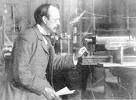
In 1897 the discovery of the electron (the first subatomic particle) and the similarity of its motion to visible light is first described by English physicist Sir J.J. (Joseph John) Thomson (1856-1940), who experimentally determines the ratio of its mass to its charge, making him "the Father of the Electron"; he has been dir. of the Cavendish Lab at Cambridge U. (founded 1874) since 1894, and it goes on to generate 14 Nobel Prize winners, who discover the atomic nucleus, cloud chamber, and atom smasher. In 1908 Hans W. Geiger and A. Marsden, under the direction of Ernest Rutherford aim alpha particles at thin foils, disproving J.J. Thomson's model of the atom (electrons moving in "a sphere of uniform positive electrification") when a small percentage (1 in 8K) of the particles is scattered at an angle of 90 degrees; "It was about as credible as if you had fired a 15-in. shell at a piece of tissue paper and it came back and hit you" (Rutherford, 1936). In 1910 J.J. Thomson deflects "positive rays" (alpha particles) in a magnetic field. Cavendish Lab is the place for nerds to be? In 1919 Ernest Rutherford becomes dir. of the Cavendish Lab at Cambridge U., and uses alpha particles to bombard nitrogen molecules in air, transmuting them into oxygen and hydrogen; the ancient dream of alchemists is achieved, proving that the atom is not the ultimate building block of the Universe? In 1919 J.J. Thomson pub. a paper laying the foundation of the modern theory of atomic structure, postulating the existence of an atomic "nucleus" (a term he coins next year), where all the positive charge is concentrated in a small region.

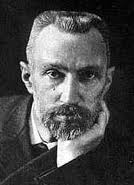
In 1898 Polish-born French brain babe Marie Curie (1867-1934) coins the term "radioactivity"; she and her hubby Pierre Curie (1859-1906) discover the radioactive elements Radium (Ra) (#88) (named after radioactivity) (Dec. 21) and Polonium (Po) (#84) (named after her native Poland) in pitchblende from the St. Joachimsthal mines in Bohemia, winning them the 1903 Nobel Physics Prize; early medical uses found for radioactivity in cancer treatment cause it to be billed as a fountain of youth until its cancer-causing power is discovered; too bad, she dies on July 4, 1934 of leukemia caused by overexposure to radiation, and her lab has to be torn down brick by brick and her papers banned for half a cent. as too dangerous to handle without signing a medical release.


In 1900 English physicist John William Strutt, 3rd Baron Rayleigh (1842-1919) pub. the Rayleigh-Jeans Law (improved by Sir James Jeans in 1905), claiming that the spectral radiance (emission at a single frequency) of a "black body" (perfect absorber of radiation, radiating an amount equal to that which it is absorbing) is proportional to the frequency to the fourth power, which heads toward infinity as the frequency approaches infinity, causing the Ultraviolet Catastrophe, the prediction that a black body emits radiation with infinite power; on Oct. 19 after ruminating not on that but on why Wien's 1896 Displacement Law breaks down at low frequencies, German physicist Max Planck (1858-1947) announces to the Berlin Physical Society his revolutionary Planck's Radiation Law, proposing the (Old) Quantum Theory to account for the radiation from a black body, explaining that it is emitted in discrete quanta, each being of an energy value equal to Planck's constant h times the frequency, and violating the ancient maxim "Natura non facit saltum" (Nature doesn't make jumps); as he can't explain the meaning of his new constant, he delves into atomic theory to try and find a clue; meanwhile herr Wilhelm Wien proposes the formula E = (3/4) * M * C^2 for the relation between electromagnetic mass and electromagnetic energy - don't complain about the wienie in your neighbor's eye when you have a planck in your own?

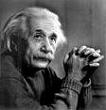

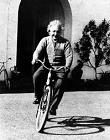

Every time I tried to tell you the words just came out wrong, so I had to tell you in a relativistic song? In 1905 while working in the Swiss Patent Office in Bern, Austria-born Jewish physicist Albert Einstein (1879-1955) has his Miracle Year of 1905, publishing five theoretical physics papers in Annalen der Physik, three of which are key to the development of 20th cent. physics: on the photoelectric effect (going beyond Planck to explain aborption as well as emission of radiation, and deriving the famous equation E = M * C^2, which goes beyond Maxwell and Planck, who showed how energy can be described by Fourier waveforms, and suggests that matter and energy are waveforms that can be mutually transformed), on statistical mechanics, and on the Special Theory of Relativity, which suggests abandoning the idea of absolute time and space by turning the speed (distance of travel divided by elapsed time) of light upside down as the real absolute (which, like Newton's theory, becomes a religious and political lost-shaker-of-salt hot potato because of its revolutionary social implications to some deep thinkers?); he also pub. a theoretical explanation of Brownian motion in terms of atoms, which is experimentally verified by French physicist Jean Baptiste Perrin, ending the dispute over John Dalton's Atomic Theory; he formulates the Relativistic Mirror Gedankenexperiment, claiming that the reflection from a mirror moving close to c would produce bright light pulses in the short wavelength range, which is confirmed in 2013; he incl. his wife Marity's name on the papers and gives her the Nobel Prize money; she really did all the math for him?; for the next five years few read or respond to the articles, until one day the great man himself, Max Planck becomes a groupie and invites him into the club, launching Lazy Eye's meteoric rise through Zurich U., Berlin, his Nobel (for the photoelectric effect, not relativity), and soon I've been everywhere, man, but I still haven't found what I'm looking for, a Unified Field Theory (UFT), AKA the Theory of Everything, a set of five equations attempting to unify electromagnetism and gravity, which he pub. in 1954. On Nov. 25, 1915 Einstein pub. his Gen. Theory of Relativity, stating that a uniform gravitational field is equivalent to a uniform acceleration, and reducing all gravitational physics to 4-dimensional geometry; too bad, atheists and Darwinian evolutionists seize on it and try to make it too general, expanding it to all philosophy, psychology, morals and ethics?; Einstein was actually a plagiarist, stealing "E=MC^2" from an 1903 paper by Olinto de Pretto and another 1904 paper by Friedrich Hasenhorf, the special theory of relativity from an 1878 Encyclopedia Britannica article by James Clerk Maxwell, a 1889 paper by George Fitzgerald, and an 1898 paper by Henri Poincare, the quantum theory from a 1900 paper by Max Planck and Wilhelm Wien, the photoelectric effect from an 1888 paper by Heinrich Hertz, the deflection of the light around the Sun by Sir Isaac Newton ca. 1700, Brownian motion from an 1827 paper by Robert Brown, plus more from an 1801 paper by Johann Georg von Soldner? On May 29, 1919 an eclipse is photographed by two British expeditions, one in Africa and the other in Brazil, the latter manned by English astronomer Sir Arthur Stanley Eddington (1882-1944), and Einstein's Theory of General Relativity is claimed to be confirmed. In 1950 Einstein pub. his General Field Theory; "Time and space and gravitation have no separate existence from matter"; "Physical objects are not in space, but these objects are spatially extended (as fields). In this way the concept 'empty space' loses its meaning... The field thus becomes an irreducible element of physical description, irreducible in the same sense as the concept of matter (particles) in the theory of Newton... The physical reality of space is represented by a field whose components are continuous functions of four independent variables - the co-ordinates of space and time. Since the theory of general relativity implies the representation of physical reality by a continuous field, the concept of particles or material points cannot play a fundamental part, nor can the concept of motion. The particle can only appear as a limited region in space in which the field strength or the energy density are particularly high."

In 1907 Irish physicist Arthur William Conway (1875-1950) proposes that spectral lines are created by single electrons, each in an "abnormal state", producing vibrations of a specific frequency, which is later used by Niels Bohr to develop quantum mechanics.

In 1908 German mathematician Hermann Minkowski (1864-1909) formulates a 4-dim. geometry, which is later adapted by Albert Einstein for his relativity theory.

In 1908 Swiss physicist Walther Ritz (1878-1909) follows up the work of Arthur Conway and proposes the Rydberg-Ritz Combination Principle, that the spectral lines of any element incl. frequencies that are either the sum or the difference of the frequencies in two other lines, which is later used by Niels Bohr to develop the idea of quantum numbers; meanwhile he begins the Ritz-Einstein Argument with Albert Einstein over the reversibility of time, and by next year they end up agreeing to disagree before Ritz irreversibly kicks off.
In 1908 Austrian physicist Otto Tumlirz (1890-1957) proves that the Coriolis Force determines the direction of the vortex in a draining liquid only if it is allowed to settle long enough before the plug is pulled.

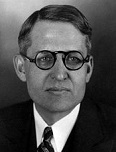
In 1909 Am. physicists Robert Andrews Millikan (1868-1953) and Harvey Fletcher (1884-1981) perform the Millikan Oil-Drop Experiment to establish that electric charge consists of integral multiples of a unit charge; after Fletcher agrees to let him in return for using the results on his 1911 U. of Chicago dissertation (becoming their first student to earn a Ph.D. summa cum laude), Millikan takes all the credit, winning the 1923 Nobel Physics Prize; Fletcher goes on to work at Bell Labs and become "the Father of Stereophonic Sound".

In 1911 Austrian-born Am. physicist Victor Francis Hess (1883-1964) discovers Cosmic Rays with a hot air balloon, winning him the 1936 Nobel Physics Prize.

In 1911 Dutch physicist Heike Kamerlingh Onnes (1853-1926) discovers Superconductivity.


In 1911 English physicist Ernest Rutherford (1871-1937) ditches J.J. Thomson's Plum Pudding Model and proposes the Planetary Nuclear Model of the Atom, a small positively-charged nucleus containing most of the mass and orbited by electrons, like the Sun and planets; too bad, classical physics makes its existence impossible, since it would radiate electromagnetic energy until it runs down and the electrons spiral down to the center; John Nicholson of Cambridge U. applies Rutherford's model of the atom to spectra and suggests that quantum jumps take place between definite states corresponding to Walther Ritz's 1908 term values - can you spot what's wrong with this picture, God repeats himself? In 1913 Danish physicist Niels Bohr (1885-1962), who came to England in 1911 to study under J.J. Thomson and Ernest Rutherford uses quantum theory to modify Rutherford's planetary model of the atom in which electrons orbit the nucleus, requiring that the atom only exist in a discrete set of stationary states; it contradicts classical electromagnetic theory but predicts the spectrum of hydrogen, winning him the 1922 Nobel Physics Prize - so I'm loving it?

In 1912 Danish chemist Niels Bjerrum (1879-1958) pub. On the Infared Spectra of Gases showing that infrared absorption by molecules is caused by uptake of rotational and vibrational energy in definite quanta, becoming the first (incorrect) application of quantum theory to interpretation of spectra.

In 1912 Dutch physicist Peter Joseph William Debye (1884-1966) of the U. of Zurich pub. the Debye Theory of Specific Heat of Solids, which modifies Einstein's theory to threat vibrations of the atomic lattice as phonons in a box instead of non-interacting quantum harmonic oscillators, becoming one of the first theoretical successes of quantum theory.

In 1912 English physicist William Henry Eccles (1875-1966) proposes that solar radiation is responsible for the difference in night and day radio wave propagation.

In 1912 German physicist Max von Laue (1879-1960) of the U. of Zurich discovers X-ray Diffraction, making it possible to directly observe the atomic structure of crystals, winning him the 1914 Nobel Physics Prize.
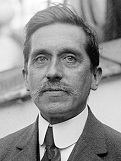
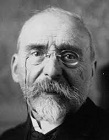
In 1913 after the spectrum of radiation from the Sun is found to be blocked 97%-99% at 200nm-315nm in the ultraviolet end, French physicists Maurice Paul Auguste Charles Fabry (1867-1945) and Henri Buisson (1873-1944) discover the Earth's Ozone Layer, located at 12-19 mi. (20-30km) above the surface, containing 10 ppm of ozone (O3), compared to 0.3 ppm for the rest of the atmosphere.

In 1913 German physicist Johannes Wilhelm "Hans" Geiger (1882-1945) of Germany invents the cool-sounding Geiger Counter for alpha rays. In 1928 Geiger and his asst. Walther Mueller (Müller) (1905-79) of Germany invent the Geiger-Mueller Tube for measuring ionizing radiation (beta particles and gamma rays).

In 1913 boyish-looking English physicist Henry Gwyn Jeffreys Moseley (1887-1915) discovers Moseley's Law, a relationship between X-ray spectra and atomic number, convincing the last skeptics of the atomic theory; too bad, he ends up KIA in Gallipoli in 1915, costing him a Nobel Prize and causing the British and other govt. to quit allowing their precious scientists to enlist for combat duty.




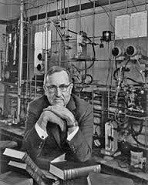
On Aug. 4, 1914 - Nov. 11, 1918 the horrific World War I causes 15M deaths and 39M military casualties. and destroys the Old Order of white formerly Christian Europe. On Feb. 26-28, 1915 the Germans first use a Flamethrower (Flame Projector) in the village of Douaumont, France near Verdun, becoming the first of 653 flamethrower attacks in the war. On Apr. 1, 1915 French aviator Roland Garros (1888-1918) becomes the first pilot to shoot down an aircraft using a deflector gear, which allows shooting through the propeller; after more Vs against German aircraft on Apr. 15 and Apr. 18, he is shot down and the Germans capture his plane, after which Dutch designer Anthony (Anton Herman Gerard) Fokker (1890-1939) clones then improves the deflector gear into the synchronization (interrupter) gear, mounting them on the new Fokker E.I. in Aug., beginning the Fokker Scourge (Scare) as they shoot down nearly every enemy aircraft they encounter and generate the first German aces, incl. Max Immelmann (1890-1916); next year the French counter with the Nieuport 11 Bebe (Bébé), in which the gun is mounted on the top wing clear of the prop, and the British with the Royal Aircraft Factory F.E.2b and Airco DH.2 (Feb. 1916), which mount the engine backwards with the prop in back, causing them to be called "pushers", ending the Fokker Scourge by spring 1917. In 1915 arsenic-based vomiting-sneeze gas Adamsite (DM) (diphenylaminechlorarsine) is synthesized by German chemist Heinrich Otto Wieland (1877-1957); in 1918 Am chemist Roger Adams (1889-1971) duplicates it, and both sides stockpile it, but it is allegedly never used on the battlefield. On Mar. 22, 1916 the British have their first success with their new Depth Charge off the SW coast of Ireland, destroying a German U-boat. Are you used to Hell yet, try this? On Sept. 15, 1916 Winston Churchill's pet project the Tank (Russian Water Closet) (Char-Schneider) is first used by the Brits in the Somme.
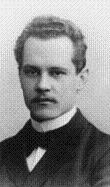
In 1919 Konigsberg, Prussia-born theoretical physicist Arnold Johannes Wilhelm Sommerfeld (1868-1951) pub. Atombau und Spektrallinien, a std. work on spectroscopy which becomes the Bible of atomic theory for a new gen. of physicists incl. Werner Heisenberg, Wolfgang Pauli, Peter Debye, and Hans Bethe; pub. after co-discovering the Sommerfeld-Wilson Quantization Rules in 1915, introducing the fine-structure constant in 1916, and co-discovering the Sommerfeld-Kossel Displacement Law this year, and succeeding Albert Einstein as chmn. of the Deutsche Physikalische Gesellschaft (DPG) last year, founding Zeitschrift fur Physik this year to allow established physicists to pub. new physics research papers in as little as two weeks sans peer review.

In 1921 Am. physicist Thomas Townsend Brown (1905-85) discovers the Biefeld-Brown Effect while experimenting with a Coolidge X-ray tube, finding that a tube with asymmetrical electrodes exerts a force when connected to a high-voltage source, later claiming that it might be used by ETs to create anti-gravity machines.

In 1921 Indian astrophysicist Meghnad Saha (1893-1956) pub. the Saha Thermal Ionization Equation, and applies it to stellar spectra.


In 1921 German physicists Otto Stern (1888-1969) and Walther Gerlach (1889-1979) conduct the Stern-Gerlach Experiment, splitting a beam of atomic silver in two instead of merely broadening it like classical physics predicts by passing it through a nonhomogeneous magnetic field, proving space quantization and opening physics up to unimaginable possibilities such as bar code scanners, CDs, and the decoding of the human genome; it had something to do with a bad cigar?

In 1923 Arthur Holly Compton (1892-1962) of the U. of Chicago discovers the Compton Effect, a change in X-ray wavelength when scattered by matter, indicating that the rays are corpuscular in nature, bolstering the proton theory.

In 1924 Indian physicist Satyendra Nath Bose (1894-1974) gets Albert Einstein's help to pub. a paper deriving Planck's quantum radiation law without any reference to classical physics, and Einstein becomes co-author, creating Bose-Einstein Statistics, which predicts a new form of matter known as the Bose-Einstein Condensate (BEC) which is experimentally verified in 1995; too bad, blackish-skinned doctorateless Bose is snubbed for a Nobel Prize.

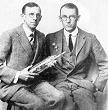
In 1924 French physicist Prince Louis Victor Pierre Raymond, 7th Duc de Broglie (1892-1987) pub. his Wave Theory of Matter, a mathematical analysis of matter based on the assumption that particles of matter have wavelike properties (de Broglie waves), or are essentially superpositions of waves of all wavelengths; in 1927 Am. physicists Clinton Joseph Davisson (1881-1958) and Lester Halbert Germer (1895-1971) of Western Electric experimentally verify it - but I don't like broccoli?
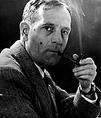
In 1924 English astrophysicist Sir Arthur Stanley Eddington discovers a Mass-Luminosity Relation for stars; meanwhile Am. astronomer Edwin Powell Hubble (1889-1953) uses Cepheid Variables to determine the absolute brightness of a star as a guide to finding its distance, causing him to announce that stars in the Andromeda Galaxy are not inside the Milky Way Galaxy, and that the latter is just one of many in a vast cosmic sea, throwing Earth centrists into a tizzy; in 2010 it is discovered that they shrink in mass, affecting calculations.





Think of all the possibilities? The German Physics Establishment makes a quantum leap in the physics of the atom? In 1925 German physicists Max Born (1882-1970), Werner Karl Heisenberg (1901-76), and Ernst Pascual Jordan (1902-80) create Matrix Mechanics, using an infinite matrix representing the position and motion of an electron in an atom as the columns, and the quantum numbers of the old quantum theory as the rows, then manipulating it to calculate spectral line frequencies and other observable quantities; meanwhile in late 1925 Austrian-Irish physicist Erwin Rudolf Josef Alexander Schroedinger (Schrödinger) (1887-1961) develops Wave Mechanics AKA the Schroedinger (Schrödinger) Equation, using a 2nd order differential equation in place of the old quantum theory concept of the atom, which, when restricted by eigenfunctions yields discrete solutions identical with the old quantum numbers, and is exactly solvable for the hydrogen and helium atoms, which the old theory stumbled on; meanwhile on Dec. 12, 1926 Albert Einstein (1879-1955) writes a Dicey Letter to Max Born, containing the immortal soundbyte "God (The Old One) does not play dice" (with the Universe), which is part of his reasoning to discard the entire program of quantum physics for life; Born's Rule, that the probability of finding a quantum object at a certain place and time equals the square of its wave function, meaning that interference occurs in pairs of possibilities, not higher order, isn't experimentally verified until 2010. As a topper, in 1927 Heisenberg discovers the Heisenberg Uncertainty (Indeterminacy) Principle, which states that the position and momentum of a particle cannot be known precisely, but have a probability distribution - but is he certain about it? In 1935 after corresponding with Einstein, Schroedinger pub. his famous Schroedinger's (Schrödinger's) Cat Paradox to illustrate the absurdity of quantum physics, showing a scenario where a cat is both dead and alive.


In 1925 Dutch physicists Samuel Abraham Goudsmit (1902-78) and George Eugene Uhlenbeck (1900-88) discover the phenomenon of Electron Spin.
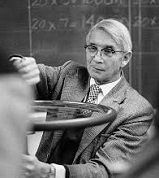
In 1925 after the problem is suggested by German physicist William Lenze in 1920, his Cologne-born student Ernst Ising (1900-98) pub. the 1-Dim. Ising Model that represents magnetic dipole moments of atomic spins as +1 or -1, becoming a popular tool in several sciences after it languishes until Lars Onsanger solves the 2-D case in the 1940s.
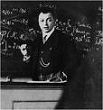
In 1925 Austrian physicist Wolfgang Pauli (1900-58) pub. the Pauli Exclusion Principle, stating that no two electrons can have exactly the same set of quantum numbers, winning him the 1945 Nobel Physics Prize.


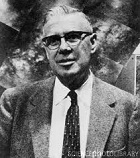
In 1927 Belgian Roman Catholic priest-physicist Georges Lemaitre (1894-1966) proposes the Big Bang (Expanding Universe) Theory of the creation of the Universe, both as a way to explain the red shift in spectra from distant galaxies and as a way to prove the existence of God - do you think your kids are scared of you? In 1929 Am. astronomers Edwin Powell Hubble (1889-1953) and Milton Lasell Humason (1891-1972) observe large red shifts in the spectra of extragalactic nebulae, and conclude that all galaxies are moving away from each other and that the Universe is expanding, later called Hubble's Law, and present it as hard evidence in support of the Big Bang creation theory, causing Albert Einstein to give up the Cosmological Constant that he introduced in 1917 to his Gen. Relativity Theory (which opposed gravity and kept the Universe stable), declaring it to be the biggest blunder of his career; meanwhile, since the Roman Catholic Church had proposed the Big Bang as evidence of the existence of God, the scientific establishment covers up Catholic priest Georges Lemaitre's work and gives the credit to Hubble, and God becomes a political football? - they put him in a mask lined with spikes and burned him at the stake?

In 1928 English physicist Paul Adrien Maurice Dirac (1902-84) pub. the Dirac Equation, a relativistic wave equation that replaces the single 2nd-order wave equation with four simultaneous first-order equations, and proves that matrix and wave mechanics are equivalent formulations of the one and only quantum mechanics, which is nice for a theory, but becomes hideously complicated to solve even for a helium atom in an age before computers; the equation implies the existence of antimatter, and permits the introduction of four complex numbers called bispinors, explaining spin as a consequence of the union of relativity and quantum mechanics, leading to the discovery of the positron and winning him the 1933 Nobel Physics Prize - stop thinking and start enjoying flawless color?

In 1928 after being predicted theoretically in 1923 by Adolf Smekal, Indian physicist Chandrasekhara Venkata "C.V." Raman (1888-1970) discovers the Raman Effect (Scattering), the inelastic scattering of light by molecules of a transparent gas, liquid, or solid substance, causing the scattered photons to have a lower frequency than the incident photons.

In Sept. 1930 Am. nuclear scientists Ernest Orlando Lawrence (1901-58) and Niels E. Edlefson of the U. of Calif. pub. the idea behind the Cyclotron (magnetic resonance accelerator); next year Lawrence and his student Milton Stanley Livingston (1905-86) build the first (80 Kev) working model at the U. of Calif.

In 1930 English mathematician-geophysicist Sydney Chapman (1888-1970) describes the photochemical mechanisms underlying the Earth's ozone layer; early in this decade he and his student V.C.A. Ferraro predict the existence of the magnetosphere.

In 1930 Dutch-born physicist Fritz Zernike (1888-1966) of the U. of Groningen in Germany invents the Phase Contrast Microscope, making possible detailed study of living cells by biologists, winning him the 1953 Nobel Physics Prize.

In 1931 after improving his high pressure apparatus, Am. physicist Percy Williams Bridgman (1882-1961) of Harvard U. pioneers research on materials at high pressures (100K atm.).

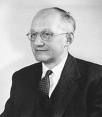


1932: The Annus Mirabilis for Nuclear Physics? On Apr. 14, 1932 after a team at Cavendish Laboratory at Cambridge U. led by Sir John Douglas Cockcroft (1897-1967) and Ernest Thomas Sinton Walton (1903-95) invent the Particle Accelerator, they split the atom, transmuting lithium into helium, winning them the 1951 Nobel Physics Prize; English physicist Sir James Chadwick (1891-1974) discovers the neutron, opening the road to building an atomic bomb; on Aug. 2 Swedish-Am. physicist Carl David Anderson (1905-91), a student of Robert Andrews Millikan (1868-1953) discovers positrons (positive electrons) while analyzing cosmic rays, confirming Paul Dirac's 1930 prediction of the existence of matter and winning him the 1936 Nobel Physics Prize.

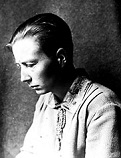
In 1932 Budapest, Hungary-born Am. mathematician John von Neumann (1903-57) pub. The Mathematical Foundations of Quantum Mechanics, which describes operator theory (Neumann algebras), and proves that no "realistic" (hidden-variable) theory can match the predictions of quantum physics; too bad, German mathematician Grete Hermann (1901-84) finds a flaw in his proof in 1935, which remains unknown until it is independently pub. in 1966 by John Stewart Bell.

In 1934 French husband-wife team Irene Joliot-Curie (1897-1956) (daughter of Marie Curie) and Jean Frederic Joliot-Curie (1900-58) discover that all elements can be made radioactive by subjecting them to bombardment with alpha particles (artificial radioactivity); later other fast particles produced by accelerators are found that do this trick; on Nov. 7, 1935 they are jointly awarded the Nobel Chem. Prize, becoming (along with her parents Marie and Pierre Curie in 1903) the first family to win husband-wife awards through two generations.
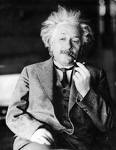


In 1935 Albert Einstein (1879-1955) and Nathan Rosen (1909-95) pub. a paper describing the Einstein-Rosen Bridge, which is later called a Wormhole; they and Boris Yakovlevich Podolsky (1896-1966) formulate the EPR Paradox that shows that quantum mechanical theory is incomplete; after Erwin Schrodinger coins the term "entanglement", Einstein describes it as "spooky action at a distance" (spukhafte Fernwirkung), launching the theory of Quantum Entanglement; in 2008 Swiss physicists measure the speed of spooky action at a distance as at least 10K times c, which is is confirmed by Chinese physicists in Mar. 2013, leading to a theory of a subluminal, superluminal, or transluminal universe, or universe behind the universe where our physical laws don't apply?
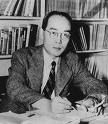

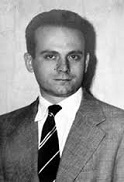
In 1935 Japanese physicist Hideki Yukawa (1907-81) prostulates a new nuclear particle, the Pi Meson (Pion), intermediate in mass between an electron and proton (200x electron mass), for which he becomes the first squint-eyed, er, Jap, er, Japanese flower child to win a Nobel Prize (1949). In 1936 Carl David Anderson, S.H. Neddermeyer et al. in the U.S. demonstrate in cosmic rays the presence of positively and negatively charged mesons as predicted by Yukawa in 1935. In 1947 after being predicted in 1935 by Japanese physicist Hideki Yukawa (1907-81), mu meson (muon) is verified by English physicist Cecil Frank Powell (1903-69); Cesare (Cesar) Mansueto Giulio Lattes (1924-2005) proves the existence of two kinds of mesons in cosmic rays, the pi meson (pion) and the mu meson (muon); the pion spontaneously transforms into a muon then decays into an electron or positron; K-mesons are also identified, which decay into pions or muons, or directly into electrons; Yukawa receives the 1949 Nobel Physics Prize, and Powell receives the 1950 Nobel Physics Prize.

In 1937 Austrian Jewish physicist Marietta Blau (1894-1970) uses a photographic plate to examine cosmic radiation at high altitude and uncover new fundamental particles; too bad, the Nazis force her to flee to Mexico, where her friend Albert Einstein gets her a job at the Polytechnical Inst. in Mexico City, followed by the U.S. in 1944, and in 1950 she is snubbed for the Nobel Prize for her photographic method of particle detection in favor of all-male Cecil Powell.
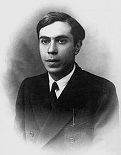
In 1937 Italian physicist Ettore Majorana (1906-60) proposes the Majorana Fermion (Particle), which is its own antiparticle, in contrast to the Dirac fermion; first detected in 2017.



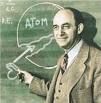



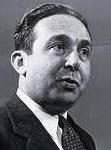




On Jan. 22, 1939 the atom is first split at Columbia U.; in Mar. the possibility of a nuclear chain reaction accompanying the fission of uranium by neutrons, uncovered by German Jewish radiochemists Lise Meitner (1878-1968) and her nephew Otto Robert Frisch (1904-79) is discussed by French physicists Frederic Joliot-Curie (1900-58), Hans Heinrich von Halban (1908-64) and Lew Kowarski (1907-79) and Italian-born U.S. physicist Enrico Fermi (1901-54), exciting considerable interest among scientists about the possibility of a nuclear bomb; Fermi wins the 1938 Nobel Physics Prize for his work on induced radioactivity by neutron bombardment and the discovery of transuranic elements, becoming known as "the Architect of the Nuclear Age". On Aug. 2, 1939 after Hungarian-immigrant Jewish physicists Leo Szilard (Leó Szilárd) (1898-1964) (who had produced a nuclear chain reaction in his lab at Columbia U.) and Eugene Paul Wigner (1902-95) (both of whom are put up to it by Niels Bohr) drive to the summer vacation cottage on Old Cove Rd. on Nassau Point in Cutchogue, Long Island (sunniest spot in N.Y.) of pipe-smoking bike-riding Albert Einstein (1879-1955) to persuade him to help the U.S. develop the atomic bomb in the fear that Germany could build one first, asking directions of a 7-y.-o. boy on the street to find him, Szilard explains the concept of a nuclear chain reaction to him, and replies "I never thought of that" (Daran habe ich gar nicht gedacht), then signs the famous Aug. 2, 1939 Letter to Pres. Roosevelt urging the creation of an atomic weapons research program, which after Jewish-Am. economist (friend of Einstein) Alexander Sachs (1893-1973) meets with FDR on Oct. 11 and delivers it becomes the Manhattan Project. On Sept. 17, 1939 a meeting is held in the Army Ordinance HQ in Berlin to launch the German A-bomb Project, led by physicists Werner Karl Heisenberg (1901-76) and Carl Friedrich von Weizsaecker (Weizsäcker) (1912-2007), based in Strasbourg. Nerds win in Chi town? In fall 1939 the U. of Michigan plays the U. of Chicago at Stagg Field in Chicago and wins by a score of 85-0; the next day UC pres. (1929-45) Robert Maynard Hutchins (1899-1977) bans jock-friendly football and turns the stadium over to nerdy scientists, who go on to create the first atomic pile.



On Sept. 1, 1939 - Sept. 2, 1945 the horrific $3.5T World War II resulted in 24M military and 49M civilian deaths, and featured the low point of the Jewish Holocaust (Shoah) by the German Nazis, I guess it was the Jews' fault for not ransoming themselves to go to Israel before they could round them up for the camps. The whole experience turned Jews from lovers into fighters, ramping up the Zionist movement with full world sympathy and support by new world superpower U.S., which had its own guilt trip because on Nov. 24, 1942 Budapest-born Am. Zionist leader Rabbi Stephen Samuel Wise (1874-1949) announced in a press conference in Washington, D.C. that he was authorized by the U.S. State Dept. to confirm that the Nazis had murdered 2M Jews as part of a plan to exterminate all Jews in Europe; too bad, the nat. newspapers didn't consider it front page news, and the U.S. govt. did nada. After the war ended and Americans toured the concentration camps in horror, Polish-born Jewish scholar Raphael Lemkin (1900-59), who single-handedly led an unsuccessful campaign to get the League of Nations to give internat. protections against genocide starting in 1933 finally got what he wanted after his own people got it, namely the Dec. 9, 1948 U.N. Convention on the Prevention and Punishment of the Crime of Genocide (Gen. Assembly Resolution 260), which didn't come in force until Jan. 12, 1951, and which the U.S. still didn't ratify until 1988.

In 1939 German physicist Ernst August Friedrich Ruska (1906-88) of Siemens-Reiniger-Werke AG develops the first commercial Electron Microscope providing 400x magnification. On Apr. 20, 1940 RCA of Camden, N.J. publicly demonstrates the first Electron Microscope that permits direct visualization of viruses.



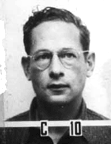
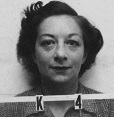

In 1941 James Bryant Conant (1893-1978), pres. of Harvard U. since 1933 becomes dir. of the Nat. Defense Research Committee (founded 1940), and deputy dir. of the Office of Scientific Research and Development, which develops the atomic bomb et al.; in 1942 the $2B U.S. Manhattan Project begins, leading to the first atomic bomb; it employs as many as 130K people, and is headed by Pentagon builder Gen. Leslie Richard Groves Jr. (1896-1970) and big brain physicist Julius Robert Oppenheimer (1906-54); Philly-born physicist Robert Serber (1909-97) writes The Los Alamos Primer, which is distributed in Apr. 1943 to all scientific staff, causing the NYT to call him "the intellectual midwife at the birth of the atomic bomb"; his wife (since 1933) Charlotte Serber (1911-67) is appointed the project's librarian, her leftist background getting both of them into hot water for awhile; Jewish-Am. physicist Theodore Alvin "Ted" Hall (1925-99) passes atomic secrets to the Soviets allegedly to keep the U.S. from having a monopoly, and is never caught, admitting it to CNN in 1998 right before his death; by 1951 67.5K nuclear missiles are built, and by 1964 the total cost of the program reaches $1T; the U.S. nuclear arsenal ends up costing $5.5T by 1996 ($21.6K per capita); the HEPA (High Efficiency Particulate Arrestance) Filter is developed for the Manhattan Project to prevent the spread of airborne radioactive contaminants, and commercialized in the 1950s. Hello, welcome to The View? On July 16, 1945 (5:29 a.m.) the $2B 48-mo. Manhattan Project (begun 1942), dir. by Sanskrit-reading brain man Julius Robert Oppenheimer (1906-54) succeeds as the first Atomic Bomb (A-Bomb), AKA the Gadget is detonated at the Trinity test site Jornada del Muerto (Journey of the Dead Dan) near Alamogordo ("fat poplar") Air Base near Albuquerque in C New Mexico, yielding the explosive power of 21K tons of TNT; "I am become death, the destroyer of worlds" (Oppenheimer, quoting the Bhagavad-Gita) - from this day white is no longer necessarily right, unless it's in a mushroom cloud?
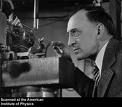

On Feb. 1, 1943 after 1K families are given 3 mo. to move in Sept. from 59K acres of farmland protected by a ridge, and a new town is started to house 75K, ground is broken for the 92-acre Y-12 Manhattan Project uranium refinement plant at Oak Ridge, Tenn., which eventually employs 82K (mainly h.s. grad women AKA the Calutron Girls, who don't know what's going on), houses nine huge concrete-steel 300' x 500' industrial bldgs. costing $427M incl. the world's largest bldg., and operates 1,152 huge Calutron electromagnet assemblies whose wire requires 14K tons of silver from the U.S. Treasury, and whose operation takes one-seventh of the total electrical power generated in the U.S. for one year to manufacture 100 lbs. of U-235 for the A-bomb; the first workers move in on July 27; a type A house with utilities and garbage pickup incl. is $38/mo. In summer 1943 construction of a gaseous diffusion plant for production of enriched U-235 for the Manhattan Project is begun in Oak Ridge, Tenn. (later called the "Energy Capital of the World"); it is operational two years later after many problems are solved; U.S. physicist Arthur Jeffrey Dempster (1886-1950) discovered U-235 using his mass spectrograph (developed in 1918), and U.S. physicist John Ray Dunning (1907-75) of Columbia U. et al. proved that slow-moving neutrons cause U-235 to fission, and developed the method for isolating it which was put into large scale production there.


In 1946 Am. physicist Edward Mills Purcell (1912-97) and Felix Bloch (1905-83) of the U.S. independently develop the Nuclear Magnetic Resonance (NMR) technique for measuring the magnetic fields of atomic nuclei to liquids and solids, winning them the 1952 Nobel Physics Prize - freshness with a spin, plug it in plug it in?

In 1947 English physicist Patrick Maynard Stuart Blackett (1897-1974) proposes the theory that all massive rotating bodies incl. the Earth are magnetic.
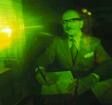
In 1947 Hungarian-British engineer-physicist Dennis Gabor (1900-79) invents Holography with electrons in an attempt to improve resolution of electron microscopes; it takes until 1963 to make holograms with laser light sources.



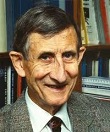
In 1949 Am. physicist Julian Seymour Schwinger (1918-94) of Harvard U. calculates the self-energy of an electron as an infinite series, permitting renormalization to be calculated; Japanese physicist Sin-Itiro (Shinichiro) Tomonaga (1906-79) independently derives the same result; after attending a conference in the Poconos Mts. in Penn. in Mar. and failing to convince the other physicists of the soundness of his methods, next year Am. physicist Richard Phillips Feynman (1918-88) of Cornell U. introduces Feynman Diagrams in an article in Physical Review; all three share the 1965 Nobel Physics Prize. Meanwhile English-born Am. physicist Freeman John Dyson (1923-2020) demonstrates the equivalence of Feynman Diagrams and the Operator Method of Schwinger and Tomonaga, proving that Feynman Diagrams are not just a computational tool but a physical theory that completely solves the renormalization problem, helping them gain acceptance and making a fan of J. Robert Oppenheimer, who gets him a lifetime appointment at the Princeton U. Inst. for Advanced Study "for proving me wrong".

In 1950 Italian physicist Enrico Fermi (1901-54) formulates the Fermi Paradox, that despite the seeming vastness of the Universe there's still no evidence of intelligent life anywhere but lucky lucky Earth.


In 1950 Soviet physicists Andrei Dmitrievich Sakharov (1921-89) and Igor Yevgenyevich Tamm (1895-1971) propose the Tokamak nuclear fusion reactor, using torus-shaped magnetic fields to confine hot ionized plama; next year Sakharov invents Magnetocumulative (MC) Generators for compressing magnetic fields with explosives.
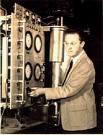
In 1952 Am. physicist Donald Arthur Glaser (1926-) invents the Bubble Chamber for use in particle physics experiments, winning him the 1960 Nobel Physics Prize.



In 1953 Charles Hard Townes (1915-2015) et al. of Columbia U. develop the first ammonia Maser (microwave amplification by stimulated emission of radiation"), where molecules are first put into excited states by absorbing incoming photons, after which further photons cause the excited molecules to give up their photons in exact phase with the new photons, creating a more powerful collimated beam; Soviet physicists Nikolay Gennadiyevich Basov (1922-2001) and Alexander Mikhailovich Prokhorov (1916-2002) discover the maser simultaneously, and all three share the 1964 Nobel Physics Prize.
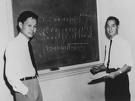
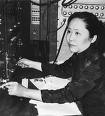
In 1956 Chinese-born Am. physicists Tsung-Dao Lee (1926-) and Chen-Ning Franklin Yang (Yang Zhenning) (1922-) of the Princeton Inst. for Advanced Study discover that parity is not conserved in nuclear reactions, suggesting that the Universe has a kind of "twist" and is not perfectly symmetrical, winning them the 1957 Nobel Physics Prize; too bad, their female coworker Chien-Shiung Wu (1912-97) ("the Madame Curie of China"), who was instrumental in devising the 1956 Wu Experiment that showed that beta particles emitted by cobalt-60 are more likely to be emitted in a particular direction depending on the spin of the nuclei is snubbed for being you know what - it had to be Siamese twins?


In 1956 a team at the Los Alamos Lab led by Am. physicists Frederick Reines (1918-98) and Clyde Lorrain Cowan Jr. (1919-74) become the first to detect neutrinos, which were first theoretically predicted by Wolfgang Pauli in 1930; meanwhile Cork, Lambertson, Piccioni, and Wenzel discover the antineutrino. In Mar. 1980 Reines announces that the neutrino has mass, and Valentin Lubimov et al. of the Soviet Union claim to measure it at 14-46 ev, causing Reines to win the 1995 Nobel Physics Prize.

In 1957 German physicist Rudolph Moosehair, er, Rudolph Ludwig Mossbauer (Mössbauer) (1929-2011) discovers the Mossbauer Effect, the resonant recoil-free emission and absorption of gamma rays by atoms in solids, winning him the 1961 Nobel Physics Prize.


On July 1, 1957-Dec. 31, 1958 the Internat. Geophysical Year (IGY) is participated in by 67 nations, who cooperate to sponsor research on the year's high solar sunspot activity; the idea was originated in 1950 by scientists James Alfred Van Allen (1914-2006) of the U. of Iowa, and British geophysicist Sydney Chapman (1888-1970) on England; the Antarctic is the initial focus of activity with Operation Deep Freeze (1955-6) using a network of 60 research stations; on Sept. 18, 1958 the temp. in the Antarctic reaches a record low of -102.1 F (-74.5 C).

On Jan. 31, 1958 the U.S. enters the Space Age by successfully launching its first satellite into orbit, 31-lb. Explorer (Futura) 1, followed on Mar. 5 by Explorer 2 (which fails to reach Earth orbit), and on Mar. 26 by Explorer 3 (Gamma 1) (launched in conjuction with the IGY); meanwhile on May 15 the Soviets launch the 7K-lb. Sputnik III, but the U.S. follows on July 26 with Explorer 4, allowing Am. physicist James Alfred Van Allen (1914-2006) of the U. of Iowa to discover the two doughnut-shaped Van Allen Radiation Belts around Earth using Geiger counters placed aboard; in Sept. 2012 a third ring between the other two briefly appears; the Van Allen Radiation Belts of highly-charged particles will turn into X-rays when they hit metal, making it impossible for humans to travel through it, leading to the conclusion that the Apollo lunar landings were faked?
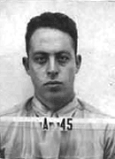
In 1958 Am. physicist ("the Father of the Neutron Bomb")_ Samuel Theodore Cohen (1921-2010) of Lawrence Livermore Nat. Lab develops the concept of the infrastructure-saving Neutron Bomb enhanced radiation weapon, which releases its energy as neutron radiation rather than feeding it back to create more explosive power; in 1963 it begins underground tests in Nevada, is shelved by Pres. Carter in 1978 after news that it will be deployed in Europe causes protests, and is reinstated by Pres. Reagan in 1981, after which Pres. G.W. Bush starts dismantling them, completed in 2003; meanwhile France tests its first neutron bomb on June 24, 1980, but also dismantles them.

In 1958 Philip Warren Anderson (1923-) proposes Anderson Localization, a novel containment of electrons in a highly disordered medium, winning him the 1977 Nobel Physics Prize.

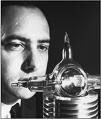

In 1958 the Laser (Light Amplification by Stimulated Emission of Radiation) is invented at Bell Labs by Charles Hard Townes (1915-) and Arthur Leonard Schawlow (1921-99); they receive a patent on Mar. 22, 1960. On May 16, 1960 U.S. physicist Theodore Maiman (1927-2007) of Hughes Research Labs in Malibu, Calif. (brother-in-law of Schawlow, who came up with the idea of building a cavity out of synthetic ruby to serve as an amplification chamber) first demonstrates the Optical Ruby Laser. In 1957 Am. physicist Gordon Gould (1920-2005) proposes the theory of the laser and coins the name; too bad, as a former Communist the govt. won't give him clearance to work on the development, allowing Theodore Maiman at Hughes Research Labs to beat him to it, and his U.S. patent is stolen, although he obtains patents in other countries; in 1977 he finally obtains U.S. patent #4,053,845 on optically-pumped laser amplifiers, freaking out the $400M/year laser industry, which fights him in court, until he wins a big V in 1987 and ends up with 48 patents and makes millions and his name becomes as gordon gould?





The thrill of breaking things becomes Big Science? In Jan. 1960 Murray Gell-Mann (1930-) of Caltech pub. his Eightfold-Way Theory, proposing that all of the 100+ nuclear particles, incl. subnuclear hadrons (baryons and mesons) are made up of Quarks (named after James Joyce's "Finnegans Wake", "Three quarks for Muster Mark!/ Sure he hasn't got much of a bark/ And sure any he has it's all beside the mark"), which come in various flavors (up, down, strange, charm, top, bottom), and are permanently confined by forces coming from the exchange of Gluons, and calling for a search for a nuclear particle called Omega Minus; the same mo. Yuval Ne'eman (1925-2006) of Israel pub. a similar theory; too bad, Gell-Mann is awarded the 1969 Nobel Physics Prize, but Ne'eman is snubbed. In 1969 evidence of the existence of the elusive quark is finally discovered at the Stanford Linear Accelerator Center by Jerome Isaac Friedman (1930-), Henry Way Kendall (1926-99), and Richard Edward Taylor (1929-), who share the 1990 Nobel Physics Prize. In 1972 Gell-Mann develops Quantum Chromodynamics to link quarks and color forces; Gell-Mann and Harald Fritsch propose Gluonium (Glueballs) (Gluon-Balls), composed entirely of gluons (i.e., pure force); verified by researchers at TU Wien in 2015?


In 1962 Am. physicist Richard Phillips Feynman (1918-88) discovers a theory of Quantum Gravity, which is independently discovered by Steven Weinberg and Bryce DeWitt; too bad, they can't get rid of derivatives higher than second order, requiring the equations to have an infinite number of terms, causing them to reject it; in 2005 Am. physicist Frank J. Tipler (1947-) claims that if the Big Bang and Omega Point are incl., it becomes correct. In 1968 Feynman develops a theory for quarks based on (dolly?) Partons, hypothetical hard particles inside the nucleus, winning a share of the 1965 Nobel Physics Prize - so that's what's inside? "The scientist has a lot of experience with ignorance and doubt and uncertainty, and this experience is of very great importance, I think. When a scientist doesn’t know the answer to a problem, he is ignorant. When he has a hunch as to what the result is, he is uncertain. And when he is pretty darned sure of what the result is going to be, he is in some doubt. We have found it of paramount importance that in order to progress we must recognize the ignorance and leave room for doubt. Scientific knowledge is a body of statements of varying degrees of certainty - some most unsure, some nearly sure, none absolutely certain."

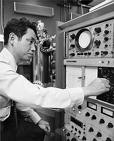

In 1962 22-y.-o. British physicist Brian David Josephson (1940-) discovers the Josephson Effect, the quantum mechanical tunneling of paired electrons (Cooper Pairs) through a thin barrier between semiconductors, after which Japanese-born physicist Leo (Reona) Esaki (1925-) of Sony Corp. and Norwegian-born Am. physicist Ivar Giaever (1929-) of Gen. Electric use the effect to increase transistor switching speeds by 10x-100x, winning them the 1973 Nobel Physics Prize.



In 1962 Jewish-Am. physicists Leon Max Lederman (1922-2018), Melvin Schwartz (1932-2006), and Jack Steinberger (1921-) discover the Muon Neutrino using the 30 GEV proton accelerator at Brookhaven, N.Y., winning them the 1988 Nobel Physics Prize.

A year in which science really digs the letter Q, and mathematics discovers its own queer stuff? In Nov. 1963 the search for the Omega Minus baryon particle begins at Brookhaven's 80-in. bubble chamber, using Kappa Minus particles, finally finding the first one on Jan. 27, 1964 after taking 300K photos (95,089th expansion), showing it decaying into a negatively charged pi particle and make a downward turn (also an invisible neutral xi particle); the search now turns for the elusive fundamental building block particle, the quark, "the greatest adventure of our time" (Murray Gell-Mann); Russian-born Am. physicist George Zweig (1937-) contributes to the concept.
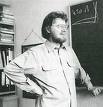
In 1964 Irish physicist John Stewart Bell (1928-90) of CERN (European Particle Physics Lab) in Switzerland pub. his paper On the Einstein Podolsky Rosen Paradox, dealing with "spooky action-at-a-distance", and deriving Bell's Theorem (Inequality), disproving the idea of hidden variables in quantum mechanics (such as a factor that tells a radioactive atom when to decay), and establishing that reality is non-local; "The concept of 'measurement' becomes so fuzzy on reflection that it is quite surprising to have it appearing in physical theory at the most fundamental level... Does not any analysis of measurement require concepts more fundamental than measurement? And should not the fundamental theory be about these more fundamental concepts?"

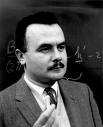
In 1964 Am. nuclear physicists James Watson Cronin (1931-2016) and Val Logsdon Fitch (1923-2015) of Princeton U. show that the decay of K-mesons is not invariant under the CP (charge conjugation and parity) operation, i.e., running the reaction in reverse doesn't retrace the path of the original reaction, winning them the 1980 Nobel Physics Prize.

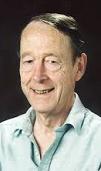


In Aug. 1964 Belgian physicist Francois Englert (1932-) and Am. physicist Robert Brout (1928-2011) of Belgium propose the Higgs Mechanism, which gives mass to vector bosons; in Oct. British physicist Peter Ware Higgs (1929-), Sir Thomas Walter Bannerman "Tom" Kibble (1932-) et al. theorize broken symmetry in electroweak theory, requiring the Higgs Boson (God Particle) (originally called the Goddamn Particle by Leon Lederman until his publishers change it, launching it into the New Age world), a massive scalar particle whose existence would explain the difference between the massless photon (which causes electromagnetism) and the massive W and Z bosons (which cause the weak force); without it, the Standard Model of Particle Physics can't explain how particles have mass; after an exhaustive hunt, evidence of its existence is found in July 2012 by physicists at CERN in Switzerland, who on Mar. 14, 2013 announce confirmation, winning Englert and Higgs the 2013 Nobel Physics Prize.


In 1965 philosophy of science opponents Karl Popper (1902-94) and physicist Thomas Samuel Kuhn (1922-96) debate at the London School of Economics, struggling for the soul of Science, with Kuhn defending his "paradigm shift" model of scientific progress, and Popper repudiating the old observation/induction method in favor of empirical falsification and critical rationalism, "the first non-justificational philosophy of criticism in the history of philosophy", which he extends to a defense of liberal democracy and the open society; Kuhn claims that when a result fails to conform to the central paradism, a scientist blames himself not the paradigm, and forgets about Popper's empirical falsification BS, and only after a series of anomalous results builds up to a crisis does a new central paradigm get formulated by revolutionary scientists who risk burning at the stake et al. until it gets accepted - are they arguing about reality or sci-fi novels they've read?
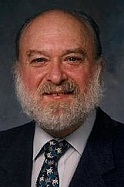

In 1966 New York City-born physicist Leo Philip Kadanoff (1937-2015) develops a block spin technique for magnets, breaking down an Ising grid into fewer blocks repeatedly to rescale or renormalize the material properties, applying the concept to second-order phase transitions, making him a star, after which in 1971 Kenneth Geddes "Ken" Wilson (1936-2013) combines his idea with his teacher Murray Gell-Mann's 1954 idea of combining an electron's infinite theoretical charge with its finite measured charge to create an effective charge that varies with distance to create the concept of < a href="https://en.wikipedia.org/wiki/Renormalization_group">Renormalization Group, which allows systematic investigation of the changes in a physical system as viewed at different scales, winning him the 1982 Nobel Physics Prize.
In 1966 the Committee on Data for Science and Technology (CODATA) is established by the Internat. Council of Scientific Unions to determine internationally-accepted values for all fundamental physical constants - oh my God?
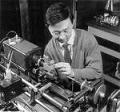
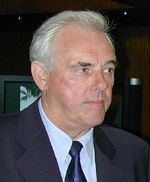
In 1966 Chinese-born engineer-physicist Charles Kuen Kao (1933-) ("Father of Fiber Optics") and British engineer George Alfred Hockham (1938-2013) of Standard Telecommunications Labs in England demonstrate the practicability of Fiber Optics by proving that high losses are caused by impurities in the glass and not by the glass itself, winning Kao a share of the 2009 Nobel Physics Prize.

In 1967 Am. relativity physicist John Archibald Wheeler (1911-2008) of Princeton U. coins the term "black hole" at a conference in New York City, where "space can be crumpled like a piece of paper into an infinitesimal dot... time can be extinguished like a blown-out flame, and ... the laws of physics that we regard as sacred, as immutable, are anything but"; he later calls them "gates of time", and eventually begins to think that the law of physics themselves evolve, since spacetime just happened and do you feel better now that she's gone into the ground? - he heard somebody say "black honky" on TV and put two and two together? In 1978 he pub. a paper pointing out the concept of Delayed Choice in the classic double-slit experiment, showing how the experimenter participates in creating the past, leading to the effort to reduce physics to information theory, "genesis by observership", "the participatory universe", "it from bit"; "The model of the universe [a giant U with an eyeball on top of one stem looking back at the other, with the skinny unadorned bend being the Big Bang] starts out all skinny and then gets bigger. Finally it gives rise to life and the mind and the power to observe, and by the act of observation of those first days, we give reality to those first days"; "No space, no time, no gravity, no electromagnetism, no particles. Nothing. We are back where Plato, Aristotle and Parmenides struggled with the great questions: How Come the Universe, How Come Us, How Come Anything? But happily also we have around the answer to these questions. That's us." (Jan. 29, 1993)

In 1968 Polish-born Jewish French physicist Georges Charpak (1924-2010) invents the Multiwire Proportional Chamber, a particle detector that allows the determination of high precision particle tracks in 3-D.
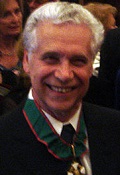
In 1968 Italian physicist Gabriele Veneziano (1942-) of CERN discovers that the physics of the strong nuclear force can be modeled by Euler's Gamma Function, which he finds in a book on the history of mathematics by chance, becoming the beginnings of Superstring Theory.



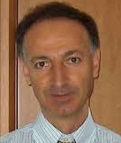
In 1969 English physicists Roger Penrose (1931-) and Stephen William Hawking (1942-2018) prove that all matter within a black hole collapses to a singularity of infinite density and zero volume; Penrose proposes the Cosmic Censorship (Naked Singularity) Hypothesis, that singularities predicted by Einstein's Gen. Theory of Relativity can be "clothed" (restricted in their influence) by black holes, getting around the problem that "naked" singularities would destroy the Universe - if a singularity can destroy the U, it can create it? In 1971 Hawking suggests that black holes the size of a proton weighing 10 tons were formed following the Big Bang; the first black hole, Cygnus X-1 is discovered in Apr.-May 1971 - black swan jokes here? In 1972 Mexican-born Israeli physicist Jacob David Bekenstein (1947-) predicts that black holes should have a positive temperature and entropy. In 1974 Hawking proposes that black holes are not completely black, but are radiating black bodies that slowly evaporate away by emitting Hawking (Hawking-Bekenstein) Thermal Radiation, then explode. In 1980 Hawking claims that a Theory of Everything will be developed by the end of the cent.; in 2010 he reverses himself and says that a "family of interconnected theories" will emerge instead. In 2005 Penrose pub. The Road to Reality: A Complete Guide to the Laws of the Universe, which claims that the recognized laws of physics are incomplete, and "I do not believe that we have yet found the true 'road to reality'." In 2010 Penrose and Armenian physicist Vahagn "Vahe" Gurzadyan (1955-) pub. Cycles of Time: An Extraordinary New View of the Universe, which proposes Conformal Cyclic Cosmology, in which the U iterates through infinite cycles where the future timelike infinity of each iteration becomes the Big Bang singularity of the next; "Concentric circles in WMAP data may provide evidence of violent pre-Big-Bang activity."



In 1970 Am. physicists Yoichiro Nambu (1921-), Leonard Susskind (1940-), and Holger Bech Nielsen (1941-) independently suggest the possibility that a theory of relativistic 1-dim. vibrating strings can explain particle physics; Nielsen is the first to call it String Theory.
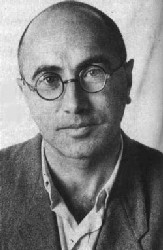

In 1970 Soviet physicist Yakov Borisovich Zeldovich (1914-87) discovers that rotating black holes spontaneously emit electromagnetic radiation, leading to the discovery of Quantum Evaporation of Black Holes (Hawking Radiation) by English physicist Stephen William Hawking (1942-) in 1974, who shows that when quantum effects are taken into account they glow and eventually explode, leading to the 1995 discovery by Ted Jacobson of Israel that Einstein's Theory of Gen. Relativity is just another way of stating the laws of thermodynamics, and that black holes are like holograms, because all the info. about what has been lost inside them is encoded on their surfaces; in 1972 Zeldovich et al. create a beam of time-reversed light using Brillouin Scattering; next year he meets with English physicist Stephen Hawking in Moscow, showing how rotating black holes should create and emit particles due to the Heisenberg Uncertainty Principle. In 1971 Hawking suggests that black holes the size of a proton weighing 10 tons were formed following the Big Bang; the first black hole, Cygnus X-1 is discovered next spring - black swan jokes here?
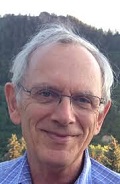
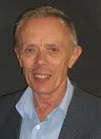
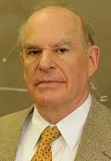
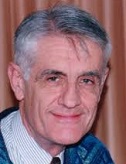
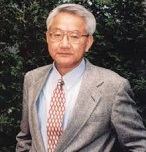
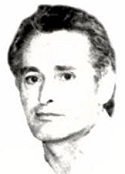
In 1971 French physicists Pierre Ramond (1943-) and Andre (André) Neveu (1946-), and Am. physicist John Henry Schwarz (1941-) develop String Theory, a string analog of the Dirac Equation incl. fermions and bosons; shortly thereafter French physicist Jean-Loup Gervais (1936-) and Japanese-born Am. physicist Bunji Sakita (1930-2002) show it to be a 2-dim. supersymmetry algebra via Dual Resonance Models; meanwhile Soviet physicist Yuri Abramovich Golfand (1922-94) and his student Evgeny P. Likhtman discover 4-dim. supersymmetry (SUSY) between bosonic and fermionic particles, opening up a possible Superworld.


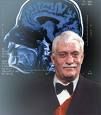
In 1972 MRI (Magnetic Resonance Imaging), based on energy absorption by nuclei is pioneered by Am. chemist Paul Christian Lauterbur (1929-2007) in his farmhouse basement in Sidney, Ohio by making fuzzy 2-D images of water in small glass tubes, getting rejected by Nature as trivial, then refined by English physicist Sir Peter Mansfield (1933-), for which they are awarded the 2003 Nobel Physics Prize; they are introduced in Britain in 1982, and the FDA approves them for the U.S. in 1984; they cost 50% more than CAT-scanners, but are superior in permitting blood flow to be viewed; Armenian-Am. Harvard medical grad student Raymond Vahan Damadian (1936-) of the U.S. started it all, coming up with the idea in 1969 and applying for the first patent in 1971, and receiving it in 1973, then performing the first full body scan July 2, 1977, although without a mechanism for generating images - is there a doctor in the house?

In Apr. 1972 Cornell U. graduate student Douglas Dean Osheroff (1945-) discovers that Helium-3 becomes a superfluid at very cold temps, winning him a share of the 1996 Nobel Physics Prize.


In 1972 Am. physicist Burton Richter (1931-) of Stanford U. et al. build the 3 GeV Stanford Positron-Electron Assymetric Ring (SPEAR) for research into subatomic particles, going on in 1974 to discover the J/Psi Meson (Psion), consisting of a 4th quark, the Charm Quark (about 1.5Kx as massive as an electron), plus its antiquark, which is 3.5x as massive as a proton, and is the first in a class of massive long-lived mesons, winning the 1976 Nobel Physics Prize; Samuel Chao Chung Ting (1936-) discovers it independently in 1974, calling it the J Particle, and shares the prize, becoming the first to deliver an acceptance speech in Chinese - j/psi sounds Chinese anyway?


In 1973 German-born Am. physicist Hans Georg Dehmelt (1922-) et al. develop the Penning Trap, which captures and holds in place a single electron while observers watch it make quantum leaps, causing physicists to revise their estimate of the size of an electron by a factor of 10K, winning them the 1989 Nobel Physics Prize; named by Dehmelt for Dutch physicist Frans Michel Penning (1894-1953). In 1979 Dehmelt et al. take the first photo of a single atom, and in 1980 they obtain a color photo of a single charged barium atom, which they name Astrid, appearing as a tiny blue dot on a black background.



In 1973 Princeton U. prof. David Jonathan Gross (1941-), and graduate students Frank Anthony Wilczek (1951-) and Hugh David Politzer (1949-) make the theoretical discovery of asymptotic freedom concerning the strong or color force that holds together quarks in protons and neutrons, proving that it gets stronger as the distance increases, like a rubber band, winning them the 2004 Nobel Physics Prize.

In 1973 Paul Musset (1933-85) et al. of CERN discover weak neutral currents in neutrino reactions, partially confirming the electroweak theory.

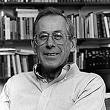
In 1973 Am. astrophysicist Jeremiah Paul "Jerry" Ostriker (1937-) and Canadian physicist Philip James Edwin "Jim" Peebles (1935-) propose the existence of Dark Matter to explain why galaxies don't fly apart - into striking pebbles?


In 1973 Indian physicist Jogesh C. Pati (1937-) and Pakistani physicist Mohammad Abdus Salam (1926-96) suggest theoretical reasons for protons to decay into other particles, winning Salam the 1979 Nobel Physics Prize, making him the first Pakistani and first Muslim to win a Nobel for science.

In 1973 Cornell U. physicist Kenneth Geddes Wilson (1936-) uses quantum field theory to analyze second-order phase transitions of materials in several dims. via the Renormalization Group, winning him the 1982 Nobel Physics Prize.
In 1973 scientists at CERN in Switzerland perform experiments revealing the existence of the neutral (zero-charge) Z Particle, a boson with 100x the mass of a proton that mediates interactions between electrons and neutrinos.


In 1974 French physicist Joel (Joël) Scherk (1946-79) and Am. physicist John Henry Schwarz (1941-) pub. a paper in which they show that string theory is a theory of quantum gravity, and that it could describe the gravitational force if the tension in the string were very high, the string size is on the order of the Planck length (10^-33 cm), and the Universe has 10 dimensions; gravitational force is carried by gravitons; Japanese physicist Tamiaki Yoneya discovers the link independently; in 1978 Scherk, French physicist Eugene (Eugčne) Cremmer (1942-), and French physicist Bernard Julia (1952-) construct the Lagrangian and supersymmetry transformations for supergravity in 11 dims, helping found M-theory; too bad, Scherk dies of a diabetic coma after attending a supergravity workshop at SUNY on Sept. 29, 1979 - you're my 11-dimensional mail order bride?





In 1974 Harvard U. physicists Steven Weinberg (1933-), Mohammad Abdus Salam (1926-96) Howard Mason Georgi III (1947-), Sheldon Lee Glashow (1932-), and Australian-born Helen Rhoda Arnold Quinn (1943-) combine gauge theories and unification of forces, and propose the Grand Unified Theory (GUT), claiming that the strong, weak, and electromagnetic forces are really the same, but broke apart after the Big Bang, and make the first prediction for the lifetime of the proton, i.e., that it is not absolutely stable, winning them 1979 Nobel Physics Prize, all except Georgi and the woman that is - are you a hot lady and all you want to do is dance?
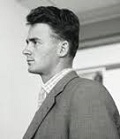
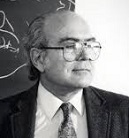
In 1974 Austrian physicist Julius Erich Wess (1934-2007) and and Italian physicist Bruno Zumino (1923-2014) pub. the Wess-Zumino Model of 4-Dim. Space-Time Supersymmetry (named by Abdus Salam and John Strathdee in 1974), which postulates that every fermion has a massive bosonic partner and vice-versa; the partners are first observed in 2003.
In 1975 scientists at the Nat. Inst. of Standards and Tech. in Md. propose Optical Molasses, the use of three intersecting laser beams to hold an atom in place and cool it down towards absolute zero.
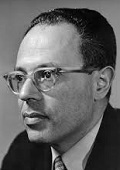
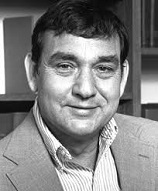
In 1975 Dutch-born Am. physicist Abraham Pais (1918-2000) and Am. physicist Sam Bard Treiman (1925-99) coin the term "Standard Model" for the theory of particle physics describing the four known fundamental forces, incl. electromagnetic, weak, and strong interactions, excluding the gravitational force, classifying all known elementary particles.

In 1975 after Brooklyn, N.Y.-born physicist Jack Sarfatti (1939-) begins hosting Sarfatti's Cave, a physics and consciousness discussion group in Cafe Trieste in San Francisco, Calif., arguing that mind may be crucial to the structure of matter, and that retrocausality may be possible, the Fundamental Fysiks Group is founded in May in San Francisco at the U. of Calif., Berkeley (UCB) to hold weekly meetings to discuss the philosophical and spiritual implications of quantum theory; members incl. Fritjof Capra, Nick Herbert, and Fred Alan Wolf.

In 1976 Am. physicist Douglas Richard Hofstadter (1945-) predicts Hofstadter's Butterfly, a quantum fractal energy structure that emerges when electrons are confined to a 2-dim. sheet and subjected to a periodic potential energy and strong magnetic field; confirmed in 2013.

In 1976 English theoretical physicist Sir Thomas Walter Bannerman "Tom" Kibble (1932-) of Imperial College, London theorizes that long super-thin Cosmic Strings formed after the Big Bang.


Big year for quark and lepton hunters? In 1977 Am. physicist Leon Max Lederman (1922-2018) et al. of the Fermi Nat. Accelerator Lab. in Batavia, Ill. discover a 5th quark, the Bottom (Beauty) Quark, which has a mass about 5Kx that of the electron, which with its antiquark forms the upsilon particle (psion), giving three quark families, up/down (ordinary matter), strange/charm (high energy), and beauty (bottom)/truth (top), and winning him the 1988 Nobel Physics Prize; the hunt is on for the last quark, the top or truth quark, 45Kx the mass of an electron, which is found in 1994; meanwhile Am. physicist Martin Lewis Perl (1927-2014) of Stanford U. studies frontal collisions between electrons and positrons in the Stanford Linear Accelerator, and in Aug. observes the first tau particles (tauons) (heavy leptons), which decay in less than a picosecond into neutrinos and an electron or muon, while an antitau particle decays into neutrinos and a positron or antimuon, winning him the 1995 Nobel Physics Prize; a tauon is a fat muon (3.5Kx the electron's mass), and a muon is a fat electron (200x the electron's mass), giving three families of leptons to match the three families of quarks.


In 1977 Am. astrophysicists George Fitzgerald Smoot III (1945-) of Lawrence Berkeley Nat. Lab in Calif. and John Cromwell Mather (1946-) of NASA discover anisotropic temperature variations in the Cosmic Microwave Background Radiation (CMBR), winning them the 2006 Nobel Physics Prize.
On July 4, 1978 the Princeton Tokamak Fusion Test Reactor uses deuterium gas (available in seawater) to reach a temp of 60M F for .05 sec.; too bad, to produce workable sustainable nuclear fusion they need to reach 100M F for 1 sec., and it is dismantled in 1997.

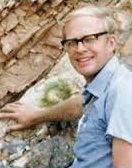
In 1978 Am. Nobel Prize-winning physicist Luis Walter Alvarez (1911-88), his geologist son Walter Alvarez (1940-) et al. propose the Asteroid Impact Theory of Dinosaur Extinction to explain the unusual abundance of iridium associated with the K-T Extinction Boundary (65M B.C.E.); 1990 studies of the impact crater of Chicxulub in the Gulf of Mexico lend support to their theory - asteroid theories are eco-friendly?
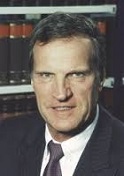
In 1978 German physicist Frank Steglich (1941-) discovers Unconventional Superconductivity in a heavy fermion superconductor mix of cerium, copper, and silicon.
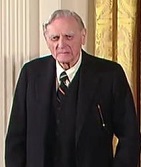
In 1980 German-born Am. physicist John Bannister Goodenough (1922-) et al. invent the Lithium-Ion Battery, based on a cobalt-oxide cathode, which goes on to take over the market despite problems with charting speeds, low temperature performance, and occasional overheating or explosions.
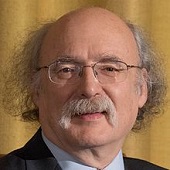
In 1981 English physicist Frederick Duncan Michael Haldane (1951-) predicts that at low temps electrons will split into two new types of particle called Spinons and Holons; verified in 2009 by physicists from Cambridge U. and the U. of Birmingham inside a quantum wire; Haldane shares the 2016 Nobel Physics Prize.

In 1981 German physicist Klaus von Klitzing (1943-) discovers the Integer Quantum Hall Effect, allowing the internat. value of the ohm to be defined, winning the 1985 Nobel Physics Prize.
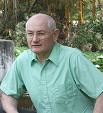
In 1981 Romanian-born Jewish Princeton U. physicist Mordehai Milgrom (1946-) proposes Modified Newtonian Dynamics (MOND) to elminate the need for dark matter.

In 1982 French physicist Alain Aspect (1947-) et al. create the first pair of Entangled Polarized Photons in the lab, confirming Bell's 1964 theory of "spooky action at a distance".
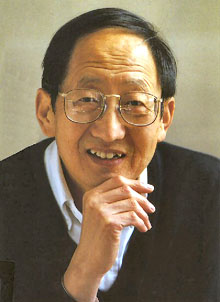


In 1982 physicists Daniel Chee Tsui (1939-) and Horst Ludwig Stormer (Störmer) (1949-) of Bell Labs first observe the Hall Effect in semiconductors close to absolute zero under powerful magnetic fields, discovering that it varies in fractional as well as stepwide increments; next year Robert Betts Laughlin (1950-) of Stanford U. discovers that the electron gas condenses to form a new type of quantum fluid where each electron combines with three flux quanta to form a boson, which can be excited by another electron to create fractionally charged quasiparticles, winning all three shares in the 1998 Nobel Physics Prize; in 2005 Laughlin pub. A Different Universe: Reinventing Physics from the Bottom Down; by the 1998 Nobel Prize Winner who doubts the existence of black holes; how the fact that there are simple laws doesn't help when trying to understand why football crowds suddenly begin singing in unison, arguing for emergence as the replacement for reductionism; "Physics is now in the midst of a crisis, an ideological battle. The most fundamental things you know may not be fundamental" - whoops there goes gravity?
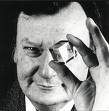

In Jan. 1983 a team at CERN in Geneva led by Italian physicist Carlo Rubbia (1934-) detects the charged W and neutral Z bosons, which are believed to carry the weak force causing radioactive decay in the atomic nucleus, and support the electroweak theory, ending a 40-year search; the discovery was made possible by Dutch physicist Simon van der Meer (1925-2011), who invented stochastic cooling; the W-particles are needed to make other particles interact in certain ways to aid the search for the Holy Grail of particles, the top quarks; Rubbia and van der Meer are awarded a quick 1984 Nobel Physics Prize.
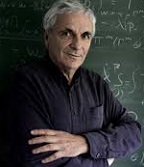

In 1984 British physicist Michael Boris Green (1946-) and Am. physicist John Henry Schwarz (1941-) prove that Superstring Theory is free from quantum anomalies if the space-time dimension is 10 and the quantum gauge symmetry is the mathematical group SO(32) or E8 x E8, making it suddenly popular with physicists.


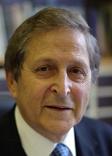
In 1985 Am. physicists Steven Chu (1948-) and William Daniel Phillips (1948-) of Stanford U., and Claude Cohen-Tannoudji (1933-) of France pioneer Doppler laser cooling, using intersecting laser beams to cool and trap atoms almost to absolute zero, slowing them from 4K km/hour to 1 km/hour, winning them the 1997 Nobel Physics Prize.

In 1985 Am. biophysicist (ex-Golden Gloves boxer) Michael Edward Phelps (1939-) of the U.S. invents Positron Emission Tomography (PET), which produces a 3-D image of a body via gamma rays emitted by a positron-emitting radionuclide tracer; James Van House and Arthur Rich are the first to pub. an image from a PET microscope.


In 1986 Swiss physicist Karl Alexander "K. Alex" Muller (1927-) and West German physicist Johannes Georg Bednorz (1950-) of IBM pioneer High-Temperature Superconductivity in ceramics (copper oxide), winning them a fast hot Nobel Prize in Physics next year.
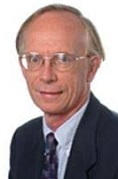
In 1988 British-Am. theoretical physicist John Lawrence Cardy (1947-) proposes the a-theorem, that the number of ways that quantum fields can be energetically excited is always greater at high energies than at low energies; it is not proven until ?


In 1987 Austrian-born Am. psychiatrist Karl H. Pribram (1919-) and Am. quantum physicist David Joseph Bohm (1917-92) (former asst. of Albert Einstein) propose the Holonomic Brain Model, which postulates that the brain stores all its info. about the past, present, and future in a "super hologram".

In 1987 German physicist Christof Wetterich (1952-) proposes Quintessence (dynamical dark energy) as an alternative to the cosmological constant to explain the expansion of the Universe; starting out attractive, it became repulsive about 10B years ago.
In 1987 R.S. Lakes of the U. of Iowa pub. the article "Foam Structures with a Negative Poisson's Ratio" in Science, containing the first example of a synthetic Auxetic (Gr. "auxeticos" = that which tends to increase) material, which becomes thicker perpendicular to the applied force when stretched; in 1991 Ken Evans of the U. of Exeter coins the term.
On Nov. 10, 1988 the U.S. Dept. of Energy announces that Bushorado, er, Texas has been chosen as the home of the $4.4B atom-smashing Superconducting Supercollider; Congress kills it in Oct. 1993.

In 1988 Am. physicist Kip Stephen Thorne (1940-) of Caltech shows that a wormhole can be turned into a time machine if "exotic matter" with less then zero mass can be found for it - how does that throw Big Bang calculations off?
In Apr. 1994 after an effort beginning in June 1991, physicists at Fermi Nat. Accelerator Lab. (Fermilab) in Batavia, Ill. announce that using their Tevatron 900 Gev accelerator they have found evidence of the top quark, the heaviest of the 12 fundamental building blocks of matter (six leptons and six quarks); up-down, strange-charmed, top-bottom with their anti-particles give 12 quarks, which together with the 12 less massive leptons (electron and its neutrino, muon and its neutrino, tauron and its neutrino) are thought to make up the entire Universe; electrons are leptons, quarks are found inside the nucleus, while protons and neutrons are combinations of up and down quarks (the two lightest); masses (electron masses): up: 5, down: 7, strange: 150, charmed: 1.5K, bottom: 5K, top: 200K (185 AMU); too bad, the Tevatron shuts down in 1993, leaving the U.S. without a particle collider, causing it to lose its dominance - guess it's time to switch fields?
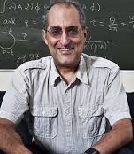
In spring 1995 Am. physicist Edward Witten (1951-) (who became the first physicist to be awarded a Fields Medal in 1990, and is considered the world's smartest theoretical physicist) gives a lecture at a USC conference in which he unifies the five separate string theories, founding M-theory and launching the Second Superstring Rev.. (ends 1997).

In 1995 a new form of matter, a Bose-Einstein Condensate (BEC) is created by MIT physicist Wolfgang Ketterle (1957-), who wins a share of the 2001 Nobel Physics Prize. In 1997 Ketterle invents the atom laser, pulses of coherent matter rather than light, produced by two overlapping Bose-Einstein condensates, which behaves like a wave.
In 1995 Jacob Bekenstein of the Hebrew U. of Jerusalem pub. a paper claiming that Einstein's Theory of Gen. Relativity is just another way of stating the laws of thermodynamics.

In 1996 Argentine physicist Juan Martin Maldacena (1968-) proposes that 10-dim. String Theory is actually a Hologram in a 1-dim. flat Universe with no gravity; in 2013 it is computationally verified.
In late 1997 Argentine physicist Juan Martin Maldacena (1968-) proposes the AdS/CFT Correspondence, the theory that 10-dim. String Theory is actually a Hologram in a 1-dim. flat Universe with no gravity; in 2013 it is computationally verified.




In 1998 Am. astrophysicist Saul Perlmutter (1959-) and Amn. astronomer Nicholas B. Suntzeff (1952-) of Lawrence Berkeley Nat. Lab and an independent team led by Am. astrophysicist Brian Paul Schmidt (1967-) of Mount Stromio Observatory in Australia use observations of supernovae to suggest that the expansion of the Universe is accelerating, causing Am. astrophysicist Adam Guy Riess (1969-) of NASA's Space Telescope Science Inst. to postulate the existence of dark energy or antigravity, theorizing that most of the energy of the Universe is contained in empty space, bringing back Einstein's cosmological constant, which he had called his biggest mistake?; they go on to share the 2011 Nobel Physics Prize.
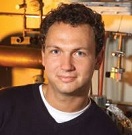
In 2000 after being hired by Bell Labs in 1997, German physicist Jan Hendrik Schoen (Schön) (1970-) begins pub. a series of papers proclaiming breakthroughs in semiconductor physics, receiving the Braunschweig Prize and other prizes before being exposed as a fraud in 2002, causing a scandal about the adequacy of peer review.
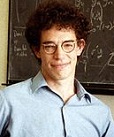
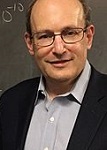
In 2001 South African physicist Neil Geoffrey Turok (1958-) of Cambridge U. and Paul Joseph Steinhardt (1952-) of Princeton U. propose the Cyclic Model of the Universe, AKA the Ekpyrotic Universe (Gk. "conflagration), in which it was created by the cyclical trillion-year collision of two Universes that were attracted toward each other by the leaking of gravity out of one of them; the past is filled with endlessly repeating cycles of evolution of new Universes, and we're just lucky to be in this one?; instead of a Big Bang, there is a Big Bounce.
In 2002 Michael Hall improves the Heisenberg quantum uncertainty relation to an equation rather than an inequality.
In Mar. 2007 a group of top physicists incl. Brian Greene (1963-) of Columbia U. announce that time travel is beyond our capabilities - when did they announce this?
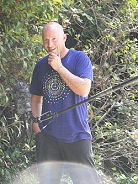
On Nov. 6, 2007 Am. lone wolf physicist (Anthony) Garrett Lisi (1968-) proposes E8: An Exceptionally Simple Theory of Everything, a grand unified field theory based on the E8 Lie group combining particle physics and Einstein's theory of gravitation, claiming to embed all three generations of fermions in E8; in July 2009 it is disproven by mathematician Skip Garibaldi of Emory U. and physicist Jacques Distler of UTA.
In Aug. 2008 the $10B 5-mi.-diam. Large Hadron Collider in Meyrin Switzerland begins test runs, hoping to eventually prove the existence of dark matter and dark energy, which make up 96% of the Universe, plus the Higgs boson, which gives mass to matter, not to mention evidence of the 10 dimensions of superstring theory; meanwhile critics warn that it might cause micro black holes to be created which hunker down inside the Earth and gobble it up; an electrical fault in Sept. 2008 causes it to be shut down until Nov. 20, 2009; in 2009 Holger Bech Nielsen of Denmark and asao Ninomiya of Japan pub. a theory that the Higgs boson is so abhorrent to Nature that its creation could ripple back in Time and stop the colider before it could make one.
In June 2009 Yale U. physicist Leonardo DiCarlo et al. make the first solid-state quantum processor, which uses quantum entanglement.
On July 13, 2009 Nature Photonics pub. the discovery by a team at Yale U. of a repulsive force of light, which along with the attractive force can be used as mechanical switches on IC chips; the force is caused by two beams out of phase with each other, and is at right angles to the beams; "The light force is intriguing because it works in the opposite way as charged objects. Opposite charges attract each other, whereas out-of-phase light beams repel each other." (Wolfram Pernice)
On Sept. 3, 2009 Jonathan Morris et al. of the Helmholtz Centre for Materials and Energy in Berling pub. a paper claiming experimental proof for magnetic monopoles.
On Sept. 30, 2009 Nature pub. an article by Hong Sheng Zhao of the U. of St. Andrews in the U.K. reporting that measurements don't support the theory of dark matter.
On Dec. 17, 2009 Nature describes 4-Dim. Microscopy, developed at Caltech, allowing photons to be filmed with electrons.
In 2009 George Ellis of the U. of Cape Town and Tony Rothman of Princeton U. propose a new Quantum Block Universe Model in which the past crystallizes out of the future, in which "The arrow of time arises simply because the future does not yet exist."
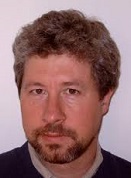
On Jan. 6, 2010 Dutch physicist Erik Peter Verlinde (1962-) pub. the article "On the Origin of Gravity and the Laws of Newton", claiming that the force of gravity doesn't exist and is just a result of entropy, "an entropic force caused by changes in the information associated with the positions of material bodies", i.e., an emergent force like temperature, announcing the theory of Entropic Gravity.
On Jan. 8, 2010 Radu Colea et al. of Oxford U. and Helmholtz-Zentrum Berlin fur Materialien und Energie in Germany pub. an article in Nature claiming to have seen signs of the Golden Ratio at the quantum level, becoming the first observation of hidden symmetry in a material.
In Jan. 2010 A. Welfore Castleman Jr. et al. of Penn State U. announce the creation of superatoms with electronic signatures of more expensive or exotic atoms.
On Feb. 14, 2010 Nature Photonics pub. research by Andrew MacRae et al. of the U. of Calgary on constructing 2-story "quantum toy houses" using photons.
On Mar. 9, 2010 researchers at the City of Paris Industrial Physics and Chemistry Higher Educational Inst. (ESPCI) pub. an article in Physical Review Letters announcing research showing that it's possible to focus light through opaque materials and detect objects behind them using the material's transmission matrix.
On Apr. 6, 2010 Theodor W. Hansch et al. of the Max Planck Inst. announce in Nature the first multi-particle entanglement in a Bose-Einstein Condensate on a microchip.
On Apr. 19, 2010 scientists at the NIST in Boulder, Colo. set a record for measuring the smallest force ever, 174 yoctonewtons (10^-24 newtons); the old record was in the attonewton (10^-18) range.
On May 18, 2010 the Fermi Nat. Accelerator Lab in Batavia, Ill. announces that 1% more muons than antimuons arise from the decay of B mesons, allegedly explaining why the Universe exists.
On July 23, 2010 Gregor Weihs et al. from the U. of Innsbruck and U. of Waterloo experimentally confirm the 1926 Born's Rule that quantum interference only occurs in pairs of probabilities, not higher order.
On Sept. 30, 2010 Bruce Kane of the U. of Md. announces the fastest-spinning object ever created, a speck of levitating graphene spinning at 60M rpm.
On Sept. 30, 2010 Nature announces the first 3-qubit entanglement by a team at Yale U.
On Oct. 26, 2010 the Lawrence Berkeley Nat. Lab announces the discovery of six new isotopes of the superheavy elements.
On Nov. 17, 2010 scientists from Lawrence Berkeley Nat. Lab and UCB announce the first successful trapping and storing of antimatter atoms.
On Nov. 24, 2010 scientists at the U. of Nottingham announce a breakthrough allowing them to build 3-D nanomolecular structures on a 2-D surface.
On Dec. 8, 2010 Slovenian scientists Matjaz Humar and Igor Musevic announce the first practical 3-D laser, which uses spherical drops holding dye molecules.
On Dec. 17, 2010 the first Quantum Machine is announced, the first to move according to the laws of quantum mechanics not classical mechanics.
On Dec. 18, 2010 the IceCube, the world's largest neutrino observatory located at the South Pole is completed.
In 2010 the first Quark Soup (quark-gluon plasma) is created at Brookhaven Nat. Lab, becoming the densest matter ever seen on Earth.
In 2010 Francesco Belgiorno et al. of the U. of Milan make the first desktop black hole, and claim that it has produced Hawking radiation; other physicists question the whole thing.
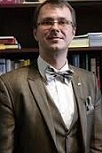
In 2010 Polish-born Am. physicist Nikodem Janusz Poplawski (1975-) of Indiana U. proposes that the Universe came from a wormhole in another Universe.
On Feb. 1, 2011 Rainer Herges, Marcel Dommaschk et al. of Kiel U. pub. an article in Science announcing the first time that the magnetic state of a single molecule at room temp has been controlled via a molecular machine similar to a record player.
On Feb. 8, 2011 scientists at Oxford U. and Trinity College, Dublin announce a way of splitting layered materials into a 1-atom sheet similar to graphite.
On Apr. 3, 2011 researchers at Penn. State U. announce a new sixth type of symmetry in materials, rotation reversal; the other five are rotation, inversion, rotation inversion, translation, and time reversal.
On Apr. 4, 2011 Kip Thorne of Caltech pub. a new theory of Tendex and Vortex Lines to conceptualize black holes.
On July 11, 2011 Chee Wei Wong et al. of Columbia U. announce the first optical nanostructures that can fully control light dispersion via changing the index of refraction to create a net zero refractive index.
On July 19, 2011 Shengwang Du et al. of Hong Kong U. of Science and Technology announce that they have proved experimentally that nothing travels faster than light, which is confirmed on Nov. 17, closing the decades-long debate about whether Albert Einstein was right; it rules out time travel?
On July 23, 2011 Xiang Zhang et al. of ? announce the first visibile light invisibility cloak.
On Mar. 16, 2012 Euro scientists announce that neutrinos don't travel faster than light as formerly believed from a Sept. experiment.
On May 11, 2012 physicists at the U. of Science and Technology of China in Shanghai announce that they've broken a 2-y.-o. record of 10 mi. by quantum teleporting photons 97 km.
In Feb. 2013 scientists at the Nat. Research Council in Canada pub. an article in Nature Photonics indicating that Heisenberg's Uncertainty Principle might be wrong.
On Mar. 7, 2013 a team of Chinese physicists announce that Einstein's "spooky action at a distance" is at least 10Kx faster than light.
On Mar. 14, 2013 after announcing its discovery last July physicists at CERN announce confirmation of the discovery of the Higgs Boson AKA the God Particle, first predicted in 1964, which explains what gives electrons and matter size and shape; this is actually the greatest intention experiment ever conducted, where thousands of scientists find what they want to find by skewing the data?
On Apr. 16, 2013 Ralph Curry et al. of the U. of Mo. announce Open-Air Containment of Plasma.
In Apr. 2013 the Beijing Spectrometer Collaboration (BESII) announces the discovery of the mysterious 4-quark Zc(3900) particle, which they believe will lead to a whole new family of 4-quark subatomic particles; on June 18 an article in Nature reports the observation of the first 4-quark particle, called Zc(3900) in the Belle Detector of the High Energy Accelerator Research Org. in Japan.
On May 1, 2013 Nassim Haramein of the Hawaii Inst. for Unified Physics (HIUP) pub. the paper Quantum Gravity and the Holographic Mass, which discusses his Connected Universe Theory, a new explanation of gravity and the source of mass, claiming that everything in the Universe is connected, and that space defines matter not vice-versa.
On May 24, 2013 an article in Science by Swiss Federal Inst. of Technology (ETH) in Zurich describes the first experimental observation of quantum magnetism.
On June 5, 2013 scientists at the Nat. Inst. of Standards and Technology (NIST) pub. a reportthat they observed the Spin Hall Effect in a Bose-Einstein Condensate (BEC).
On June 20, 2013 physicists at UTA pub. an article in Nature Communications announcing the invention of a tabletop particle accelerator that can accelerate electrons to 2GeV at a distance of only 1 in.
On July 4, 2013 astronomers Hongsheng Zhao et al. present a new theory of gravity at the U. of St. Andrews, claiming that dark matter might not exist, and that a mysterious unknown force is at work.
On July 15, 2013 Georg Heinze, Christian Hubrich, and Thomas Halfmann of the Inst. fur Angewandte Physik pub. an article in Phys. Rev. Lett. reporting that they have stopped a light beam and stored an image by electromagnetically-induced transparency for a record 1 min.
On Aug. 2, 2013 scientists at the U. of Colo. pub. an article in Science announcing a new solar-thermal system that can split water with sunlight, "the Holy Grail of a sustainable hydrogen economy".
On Aug. 9, 2013 Lawrence Krauss of Arizona State U. and James Dent of the U. of La. pub. an article in Physical Review Letters proposing that the Grand Unified Scale might create another background field in addition to the Higgs Field that would account for dark energy and explain why its density is so small, 120 orders of magnitude less than expected based on fundamental physics.
On Oct. 7, 2013 Lawrence Livermore Labs in Calif. announce the first-ever fusion reaction where the energy released exceeded the amount absorbed by the fuel, reaching just one step short of ignition, where it releases as much energy as the lasers supply.
On Jan. 29, 2014 researchers at Amherst College and Aalto U. pub. an article in Nature reporting the creation of an artificial magnetic monopole.
On Apr. 3, 2014 the Nat. Inst. of Standards and Technology announces NIST-F2, their new atomic clock, replacing NIST-F1 (1999) with 3x the accuracy, about 1 sec. per 300M years.
On June 1, 2014 Hrvoje Petek et al. of the U. of Pittsburgh pub. an article in Nature Physics announcing the detection of the exciton, which makes reflection of light from a metal mirror possible.
On Nov. 6, 2014 Nature Communications pub. an article announcing that the 1999 conjecture by Asher Peres that the weakest form of quantum entanglement can never result in the strongest manifestation of the phenomenon has been proven false by scientists at the U. of Geneva and Hungarian Academy of Sciences.
On Nov. 27, 2014 Daniel Baker of the U. of Colo. pub. an article in Nature reporting the discovery of a boundary layer in the Van Allen belts that blocks "killer electrons".
In Mar. 2015 CERN's Large Hadron Collider attempts to recreate the Big Bang, causing Stephen Hawking and Neil de Grasse to warn that this could destroy the Universe, while New Agers warn that it's really an attempt to open the Gates of Hell to permit the spirit of the Antichrist through.
On Apr. 1, 2015 scientists from Bristol U., Tokyo U., Southampton U., and NTT Device Technology Labs pub. an article in Nature Photonics announcing the first silicon microchip that generates and detects perfect quantum teleportation (entanglement).
On Dec. 10, 2015 the Wendelstein 7-X stellarator fusion machine is first put into operation.
On Mar. 21, 2016 P.R. Alexander et al. pub. an article in Nature that speculates that neutron star mergers may be the only way to form many elements heavier than zinc.
On Apr. 5, 2016 scientists at Cambridge U. pub. an article in Nature Materials announcing the detection of the new state of matter called quantum spin liquid, in which electrons break apart.
On June 17 , 2016 Am. theoretical physicist Michio Kaku (1947-) (co-founder of String Theory) pub. an article in Geophilosophical Assoc. of Anthropological and Cultural Studies, announcing that primitive semi-radius tachyons (discovered in 2005) are physical evidence that the Big U is a Matrix that was created by a higher intelligence, with the soundbyte: "I have concluded that we are in a world made by rules created by an intelligence. Believe me, everything that we call chance today won't make sense anymore.... To me it is clear that we exist in a plan which is governed by rules that were created, shaped by a universal intelligence and not by chance."
On Mar. 19, 2018 a team of physicists from Harvard U., MIT, and Lawrence Berkeley Nat. Lab pub. a paper announcing the production of kagome metal, with a Japanese basketweaving pattern that exhibits exotic electronic properties.
On Aug. 19, 2018 MIT physicists David Kaiser, Alan Guth et al. pub. an article in Physical Review Letters reporting correlations among 30K+ pairs of entagled photons from two distant quasars 7.8B and 12.2B y.o., helping confirm quantum entanglement.
On Sept. 28, 2018 Italian U. of Pisa physicist Alessandro Strumia (1969-) gives a speech at First Workshop on High Energy Theory and Gender at CERN, claiming that thanks to women's lib men are now reverse-discriminated against in physics, going on to argue that women are genetically inferior when it comes to the ability to have productive careers in the sciences,
On Oct. 10, 2018 Stephen Hawking posth. pub. his final paper, claiming that info. can be stored in "soft hair" around a black hole, keeping it from being lost forever - he never got enough black poontang when he was young?
On Dec. 10, 2018 Jamie Nagle et al. of the U. of Colo. pub. an article in Nature Physics reporting the generation of droplets of quark gluon plasms at the Brookhaven Nat. Lab. collider, supposedly recreating the matter of the U. for the first few microsec. after the Big Bang.
On Mar. 4, 2019 Kevin Pichler et al. pub. the paper Random anti-lasing through coherent perfect absorption in a disordered medium, announcing the start of work on building an anti-laser that can perfectly absorb light of a given wavelength.
On May 20, 2019 (World Metrology Day) the Gen. Conference on Weights and Measures (GCWM) unanimously adopts a new quantum definition of the kilogram; replacing the old one that stood for 130 years.
On July 19, 2019 Thomas Russell et al. of the U. of Mass. pub. an article in Science announcing the creation of the first permanent liquid magnets.
In 2019 the European Spallation Source (ESS) in Lund, Sweden begins operation, becoming the world's most powerful pulsed neutron source (until ?).
In 2019 the $1.6B Extreme Light Infrastructure Ultra-High Field Facility (ELI) in Europe is finished, delivering 200 petawatts at a target for a trillionth of a sec. in hopes of ripping spacetime apart to prove the existence of virtual particles in the quantum vacuum, unravel extra dimensions, and find the root of dark matter.